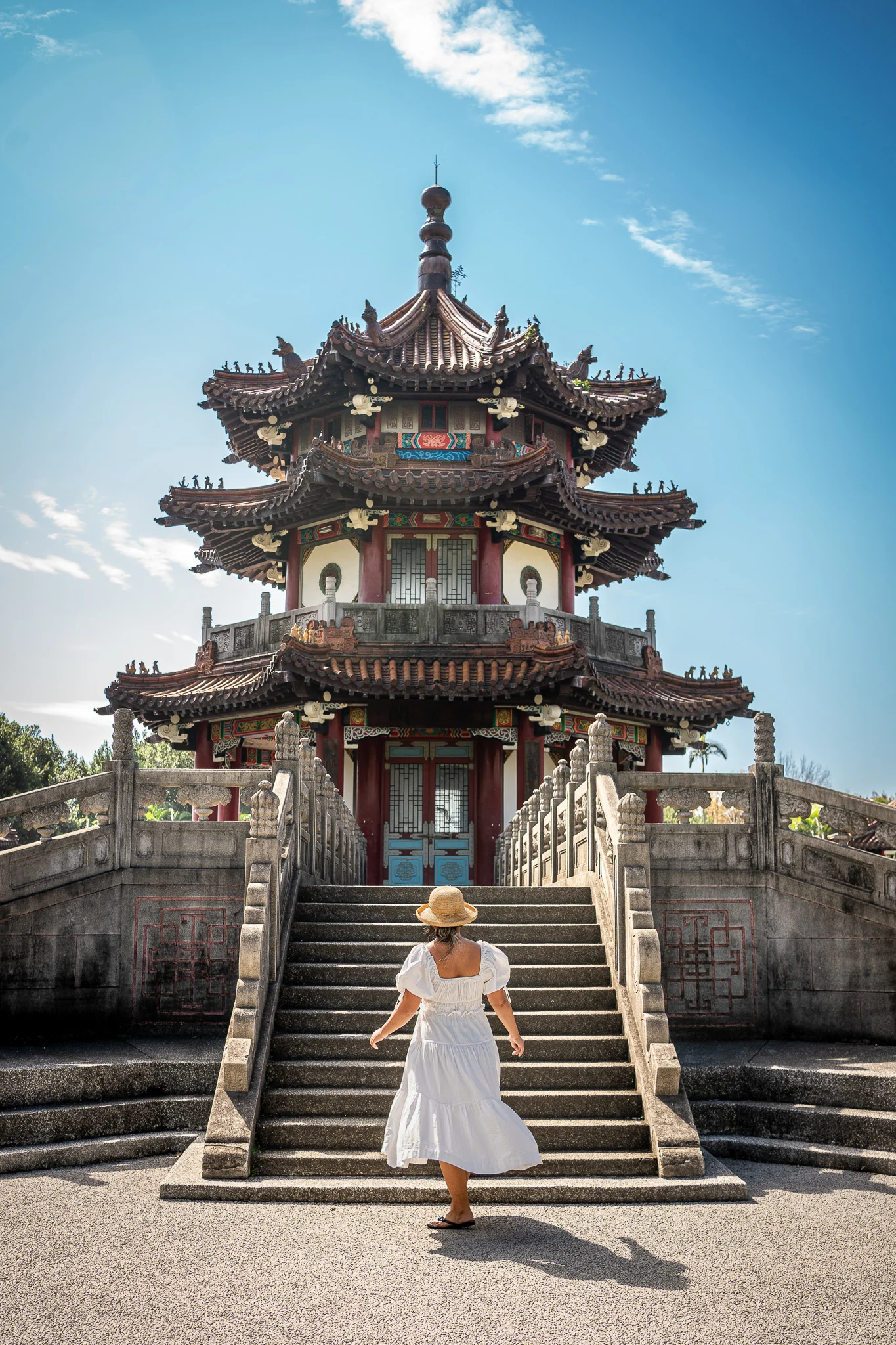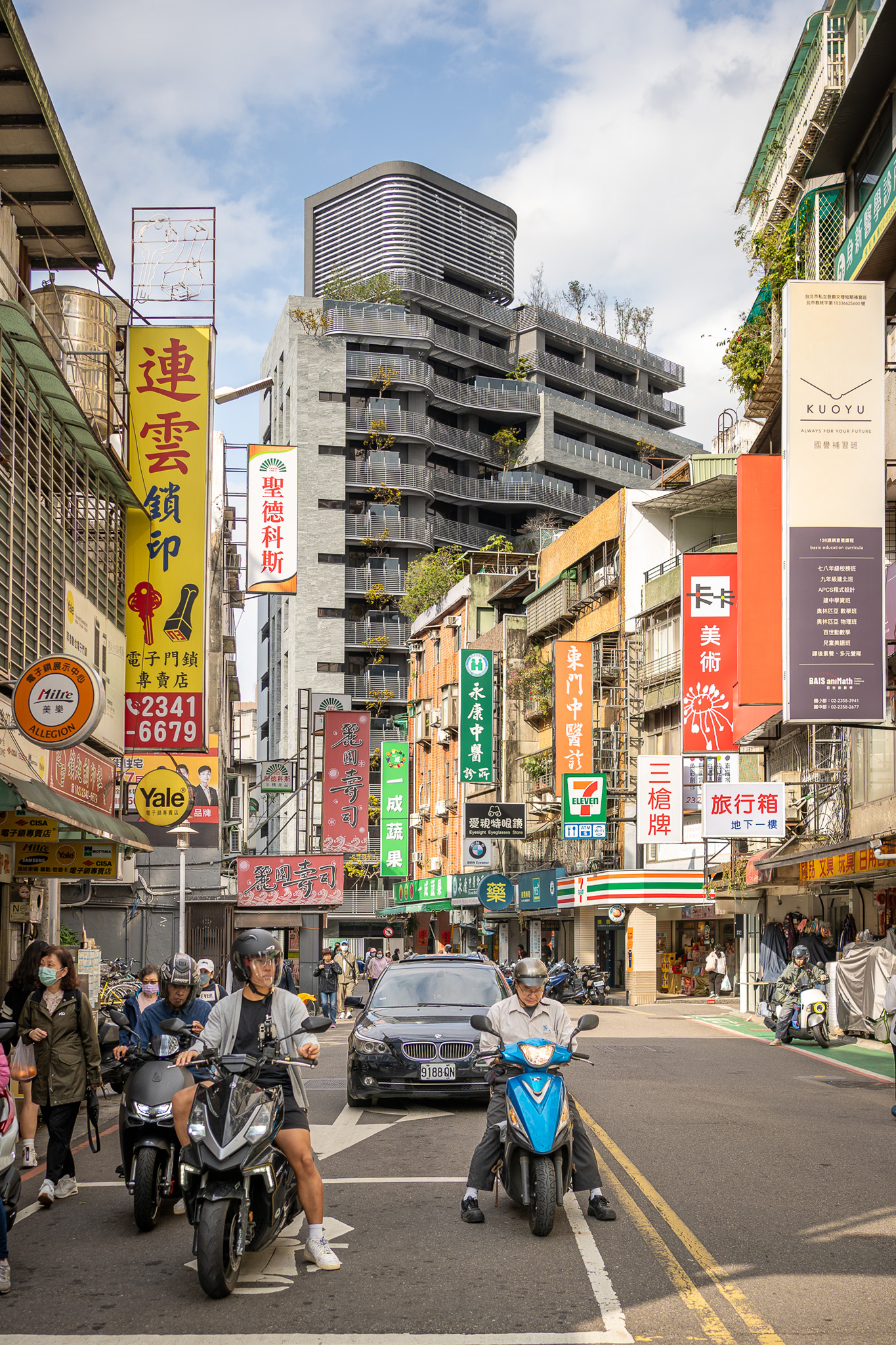About Taipei
Taipei is the capital of Taiwan. It’s also the economic hub for most of the country.
The city is very developed and is filled with historic landmarks and architecture that makes it an amazing place to live and visit.
We recommend at least 3-5 days in Taipei to fully experience what the city has to offer.
Our travel guide will tell you why we’re adding Taiwan to our list of favorite islands!
Things to Know About Taiwan
Taiwan is fairly safe to visit. There is still a risk of pickpockets, so just be vigilant while traveling to crowded areas such as Ximending Walking Street or the national museums and monuments.
There are CCTV cameras throughout the city, but they do not always capture everything and everywhere. It’s best to be aware of people who speak English well because they may be trying to pickpocket you or scam you. While scams are not prevalent, they do and can occur in Taiwan.
Taiwan’s currency is the Taiwan Dollar abbreviated as TWD. As of February 2024, the conversion was 31 TWD to 1 USD. We converted the cost of most things by dividing by 100 (if the amount is in the thousands) and then multiplying by 3 to get an approximate cost.
Most people in Taipei do not speak English. Instead, they speak Chinese (Mandarin) or more commonly Taiwanese Mandarin.
Where to Stay in Taipei
It’s possible to stay at hotels in any area of the city. The public transportation system is great so you won’t have any issues getting around town.
We highly recommend the following hotels:
- Amba Hotels in Songhan – We loved our stay here! We were able to book a south-facing room with an amazing view of Taipei 101 and Elephant Mountain. The rooms were clean, thoughtfully designed, sustainable, and very comfortable. We were also within walking distance from the Raohe night market and Wufenpu shopping district. We highly recommend staying here for a night or two if you can. It’s also directly across from the CitiLink Mall and Songshan train station which will take you across town to the Taipei main station within 6 minutes.
- W Taipei – We stayed here for a closer view of Taipei 101. The rooms are super edgy and modern. They also have a 31st-floor rooftop bar (minimum spend of 1000 NTD) that is free for guests staying at the hotel with sweeping views of the city. This hotel is located in Xinyi, the shopping capital of Taiwan. Here you’ll be within walking distance to many malls and shops offering a wide range of luxury to discounted goods.
- Grand Hyatt Taipei – For the ultimate luxury (think Crazy Rich Asians) a few nights at the Grand Hyatt Taipei will be fitting. We were upgraded to a room with a view of the Taipei 101 tower. It’s literally next door. This full-service hotel will be spendy but a night or two here is worth it. It’s centrally located to many attractions, restaurants and bars.
- Humble House – We love Curio Collection hotels by Hilton! Humble House is centrally located in the Xinyi district and is a great place for shopping.
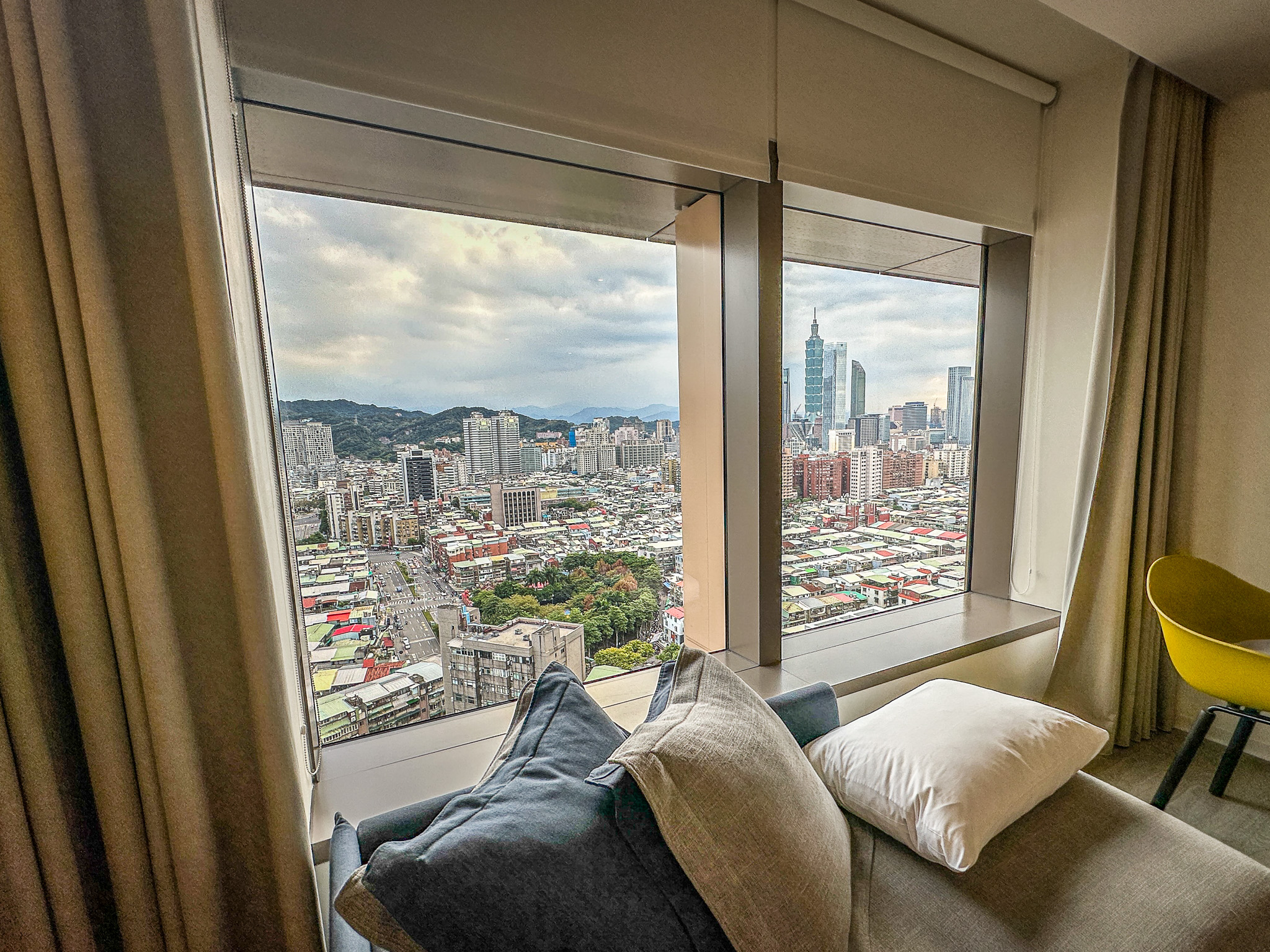
Skyline view of Taipei 101 from AMBA Hotels in Songshan
How to Get to Taipei
The only way to get to Taiwan is via airplane. Planes leave daily from Taipei’s Songshan (Airport Code: TSA) and Taoyuan Airport (Airport Code: TPE).
Taoyuan Airport: Taoyuan is Taiwan’s largest airport and typically has cheaper flights and more flight times to choose from. It’s about an hour’s journey from Taoyuan Airport to the center of Taipei. You can travel via MRT’s Airport Express train, HSR, bus, or taxi (USD 44) to get to Taipei.
Songshan Airport: Songshan is a small airport in Taipei’s city center, and can be a convenient option for people traveling within Asia. The airport is right on the Taipei MRT brown line.
Best Way to Get Around Taipei
The best way to get around Taipei is via the MRT train. Their fast trains can get you through town pretty quickly (in under 10 minutes).
It’s also one of the most affordable ways to get around. When we visited in February 2024, a one-way ticket to most spots in the city cost only 15 TWD or approximately 50 cents USD.
Some routes may require you to travel by bus which also costs 15 TWD one way and can easily cut your travel time in half.
There is also an Airport Express train that takes you from Taoyuan Airport to the city center within 35 minutes. It only cost 155 TWD or USD 5!
You can also take Uber but we found Uber to be pretty expensive and not necessarily the most convenient. An Uber from the airport to the city center will cost around USD 44.
Within Taipei, we recommend the MRT, buses, and taxis, which are typically readily available just outside most hotels and 2/3rd the price of an Uber.
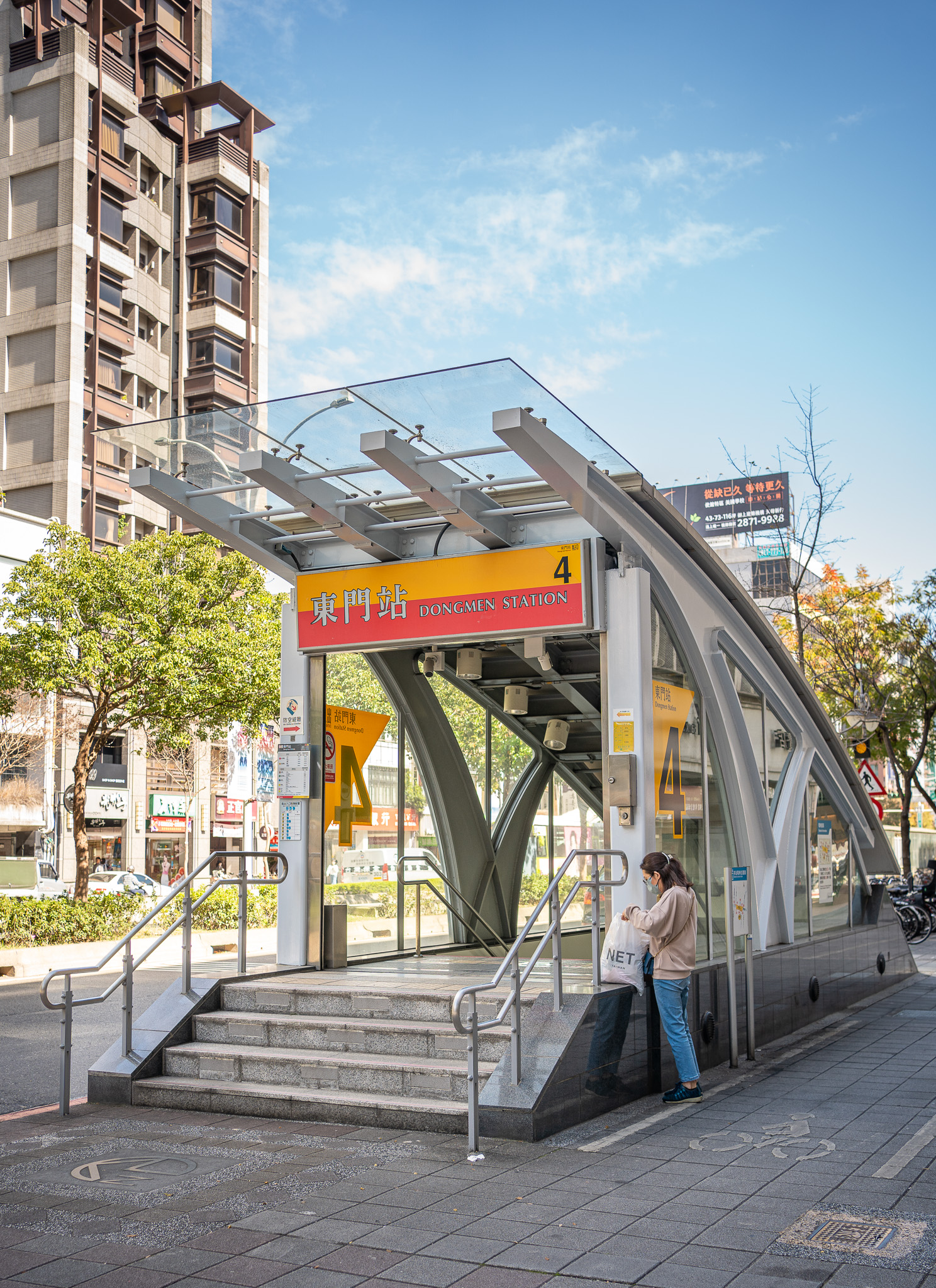
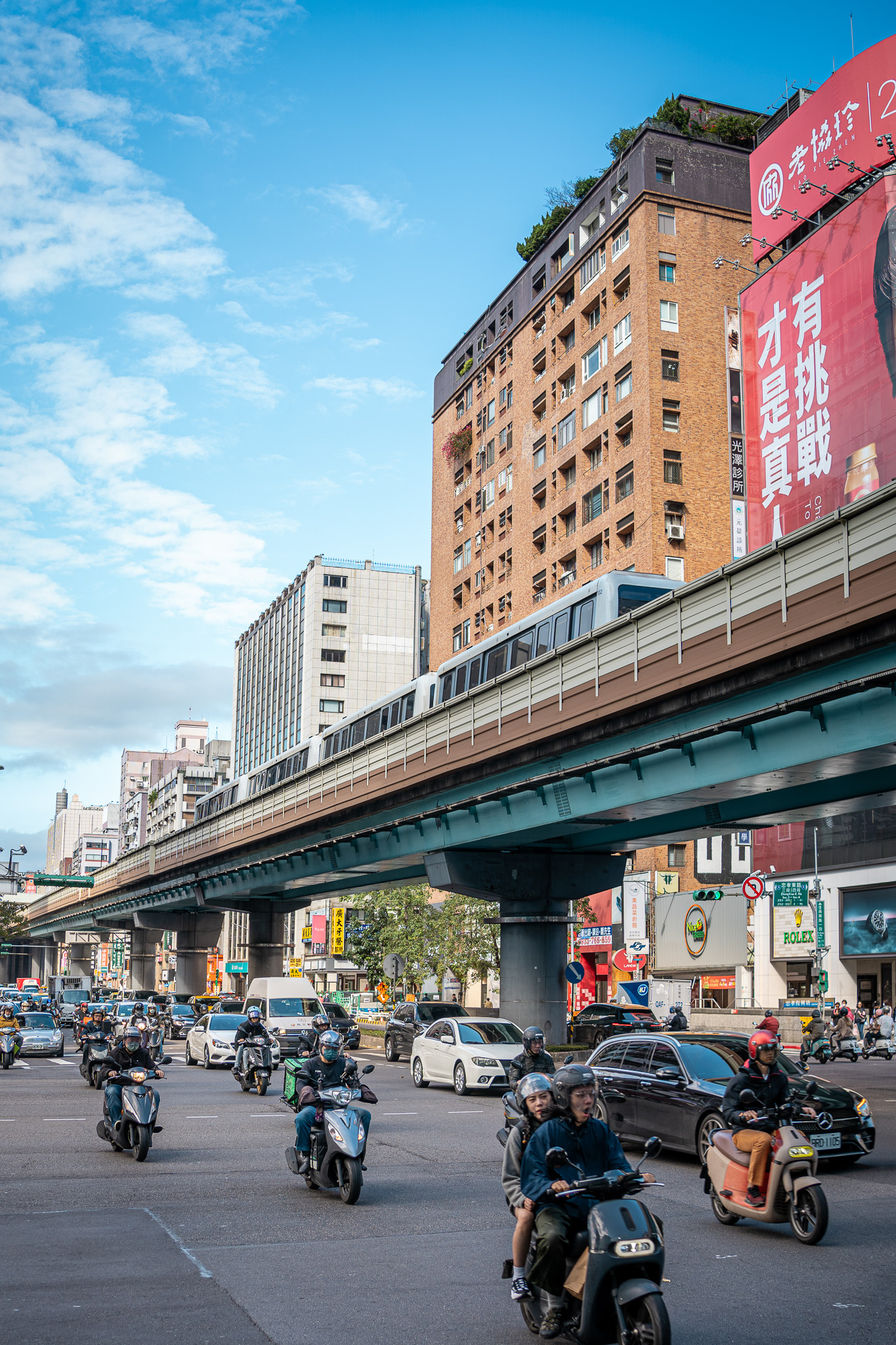
Best Things to See and Do in Taipei
#1 Visit the National Chiang Kai-shek Memorial Hall
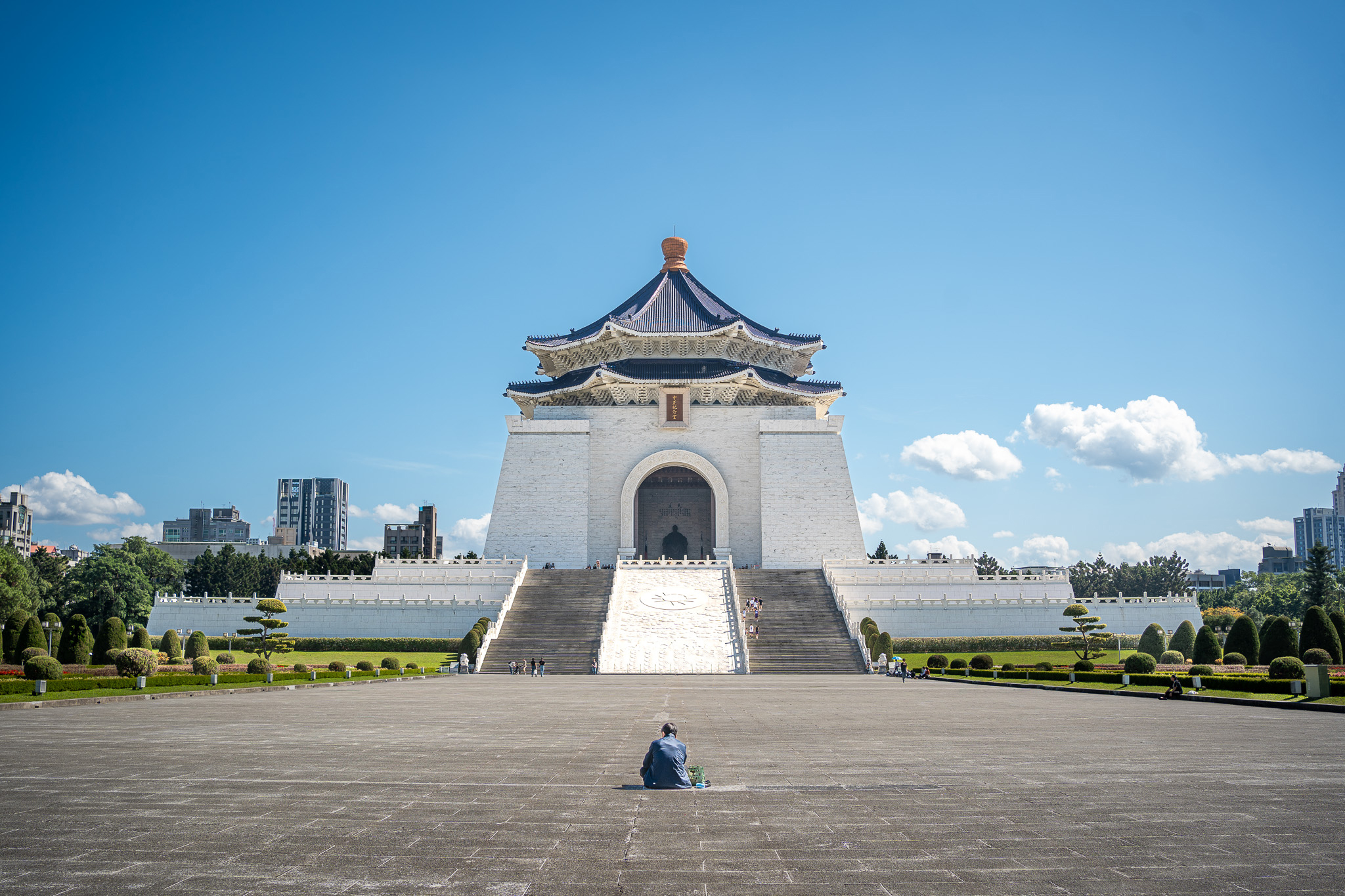
National Chiang Kai-shek Memorial Hall
The National Chiang Kai-shek Memorial Hall is a must-visit tourist spot in Taipei. It is a grand monument dedicated to the former President of the Republic of China, Chiang Kai-shek, who led the country into the Democracy that it is today.
It’s located in Liberty Square which has an impressive entry gate (the Liberty Arch) and two buildings on the north and south ends of the plaza.
The hall itself is an impressive structure with beautiful architecture and a serene atmosphere. The changing of the guards happens hourly, on the hour.
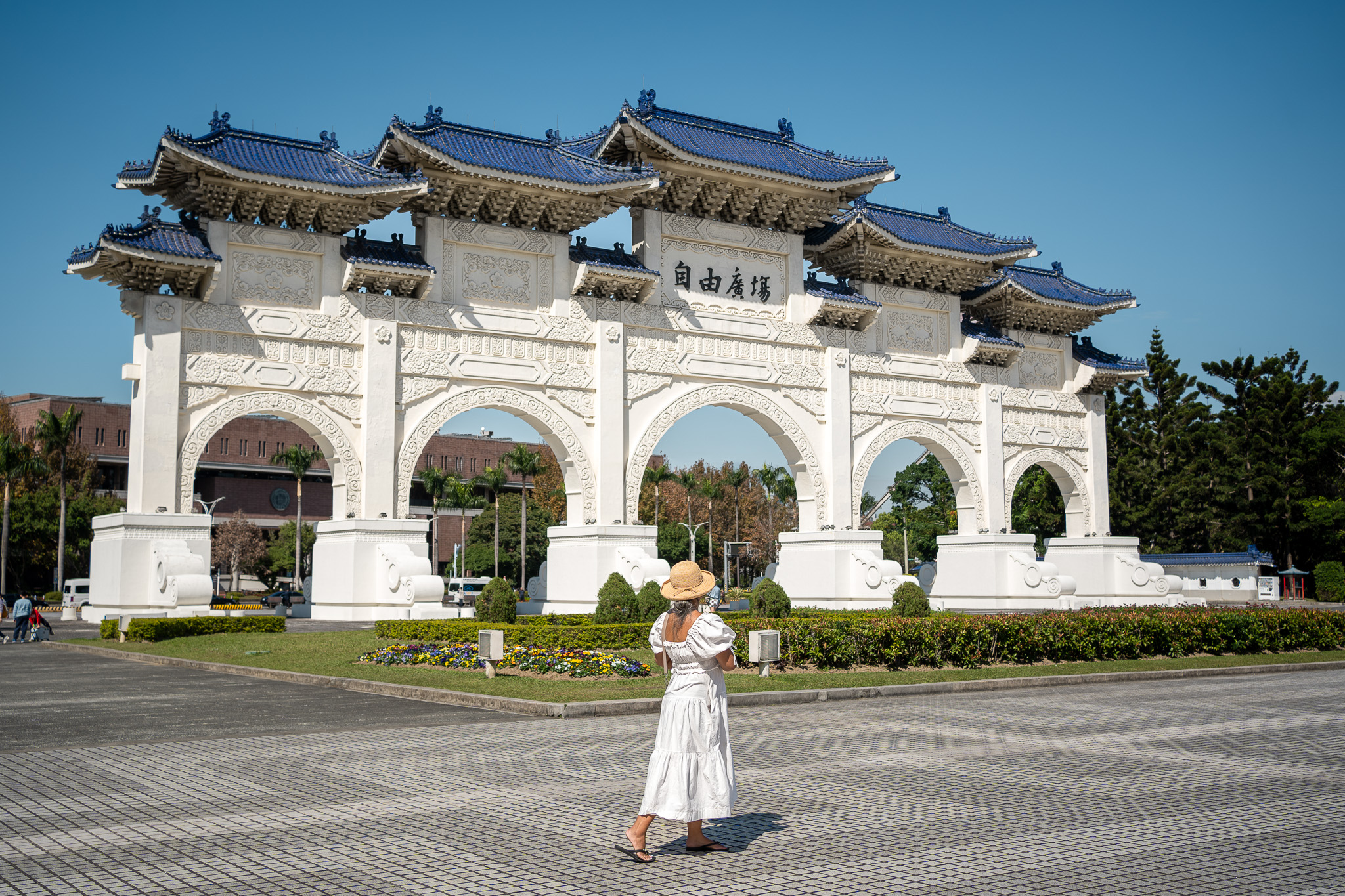
Liberty Square Arches
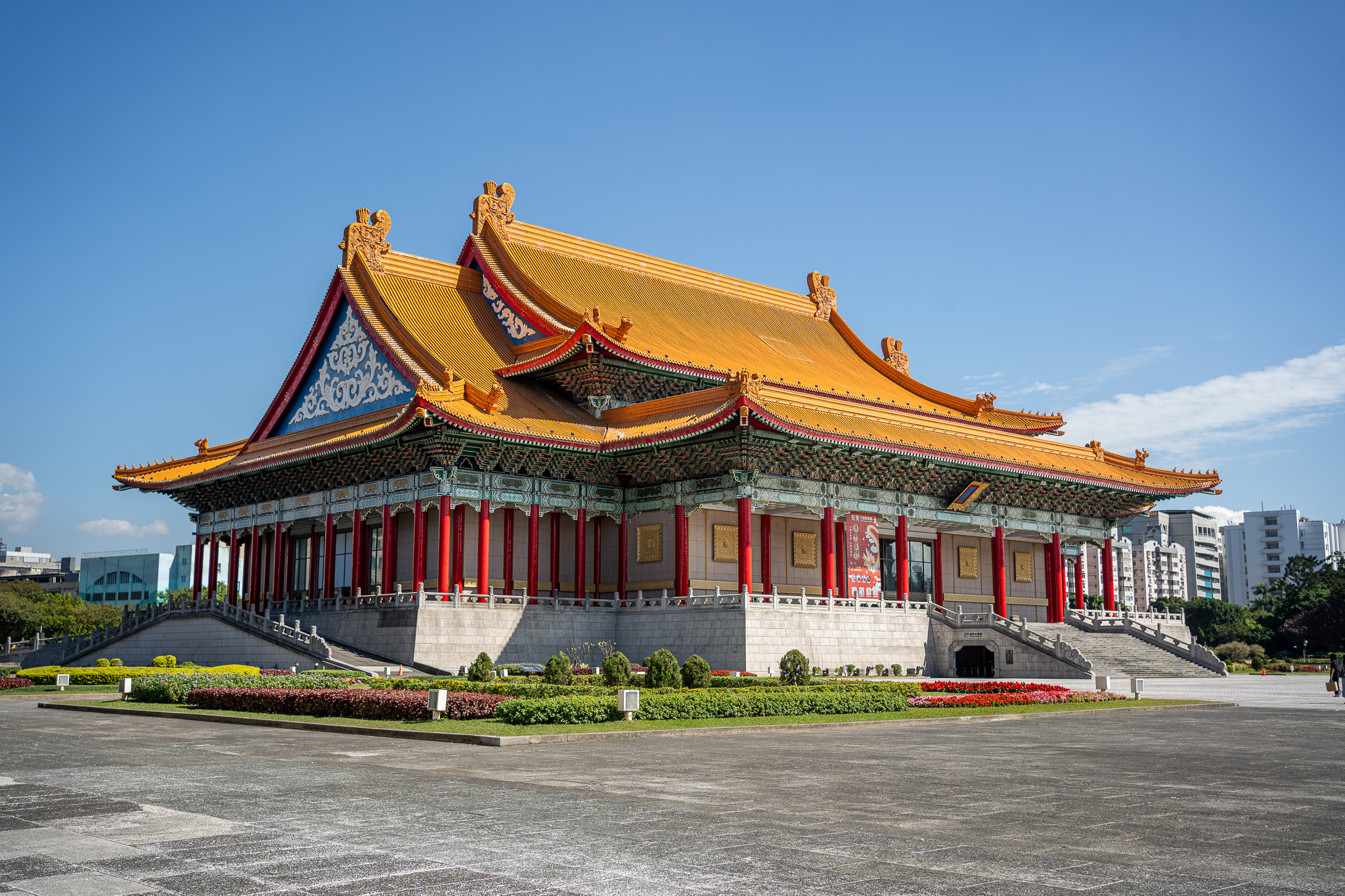
Liberty Square National Concert Hall
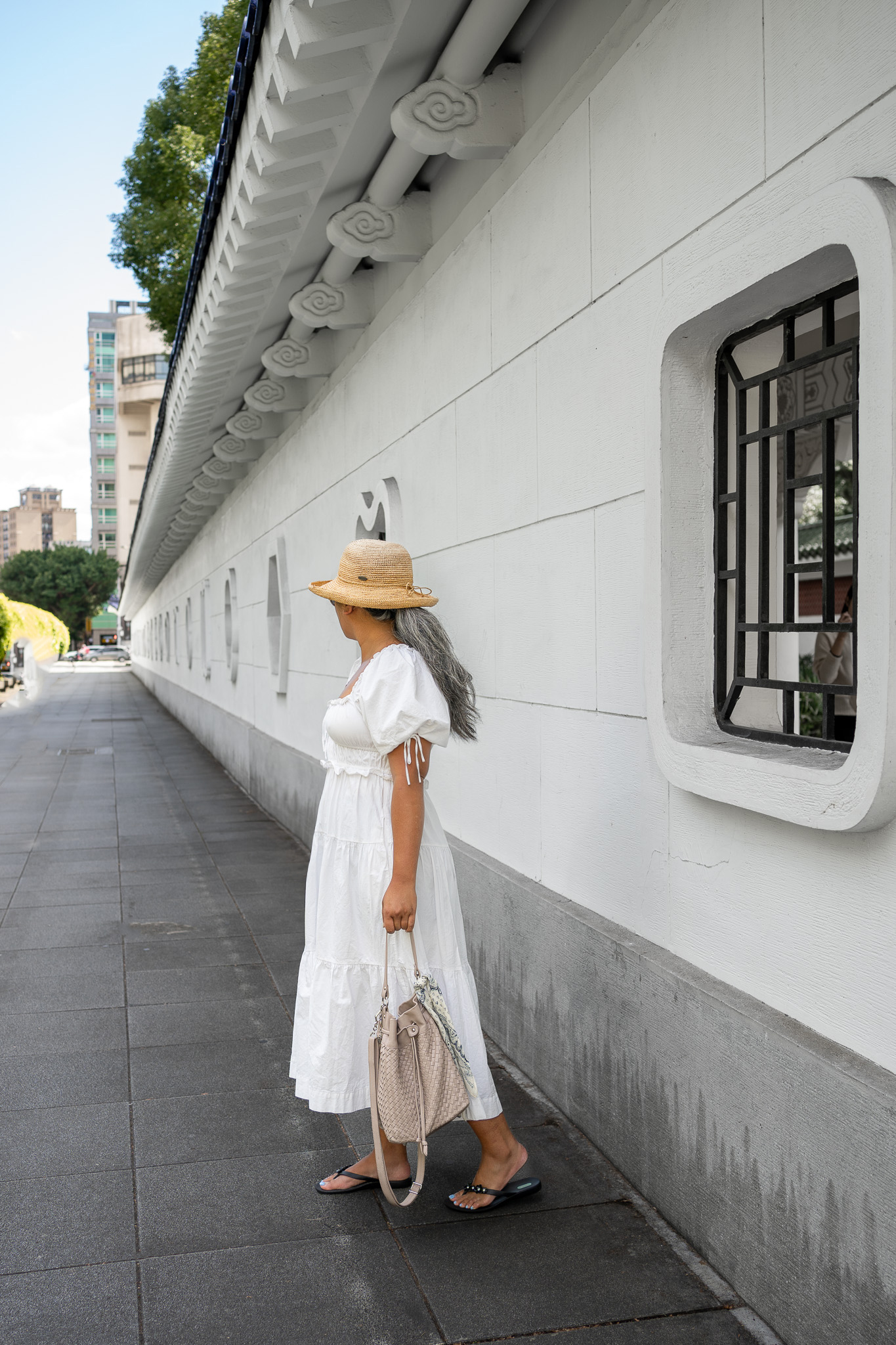
What I’m Wearing
En Saison Brielle Dress | Oka-B Loren Sandals | Milaner Woven Sylvia Bucket Bag | Wallaroo Catalina Hat
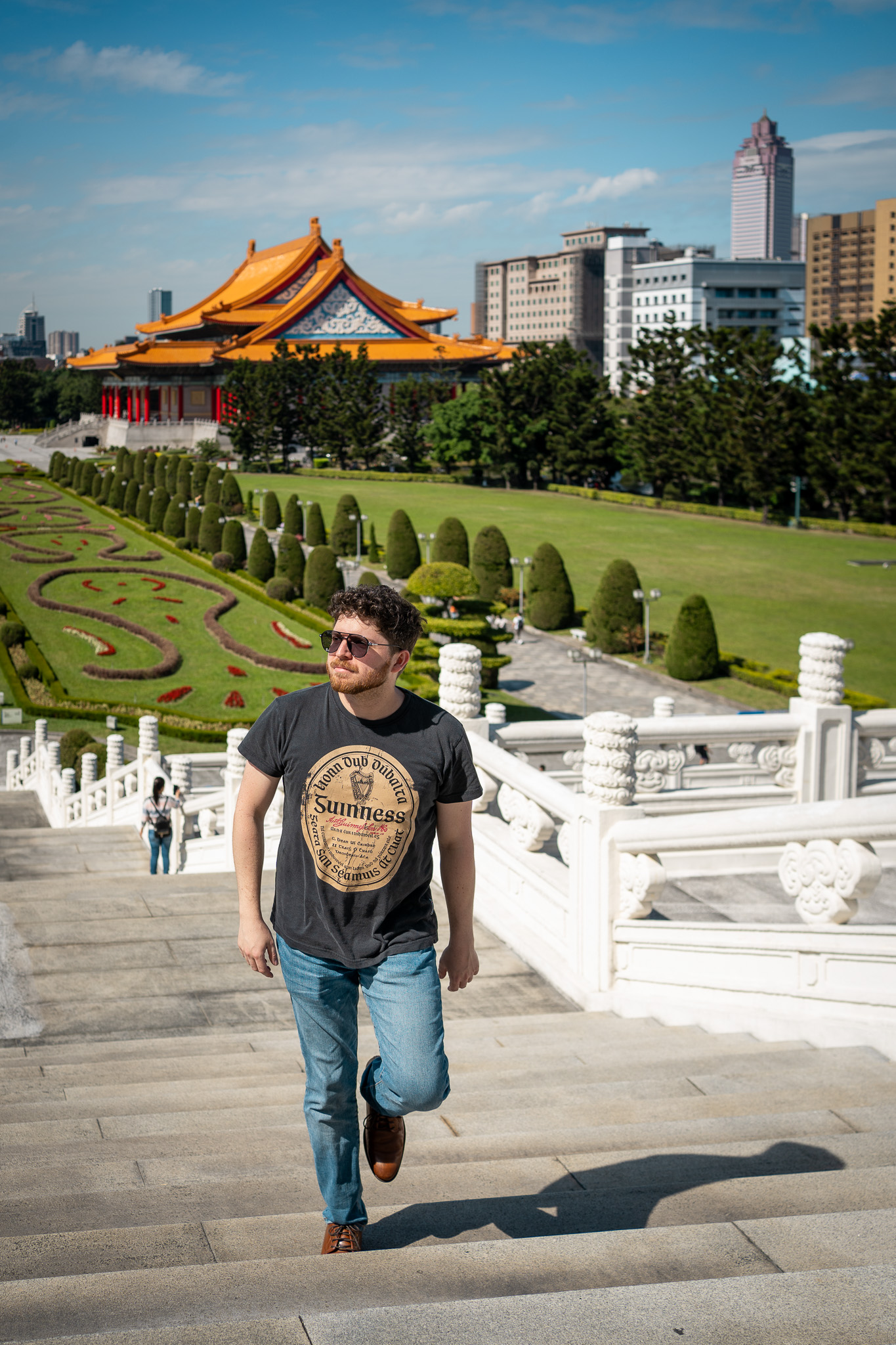
#2 Go Up the Taipei 101
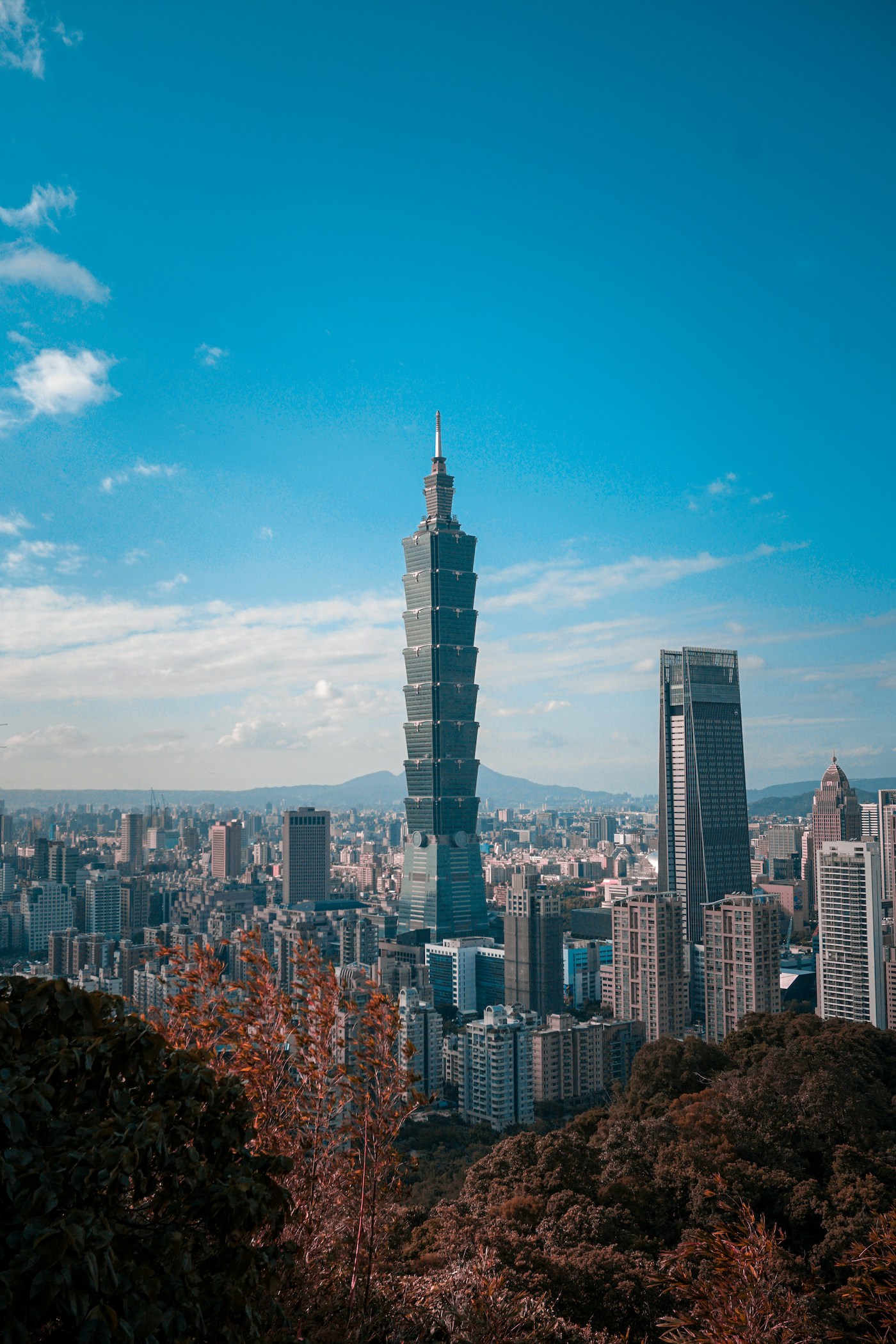
The Taipei 101 is the city’s tallest tower and was once the tallest tower in the world. Buy tickets to ascend the tower. It’s best to visit on a weekday when it’s not busy.
#3 Visit a Night Market…and Try Stinky Tofu
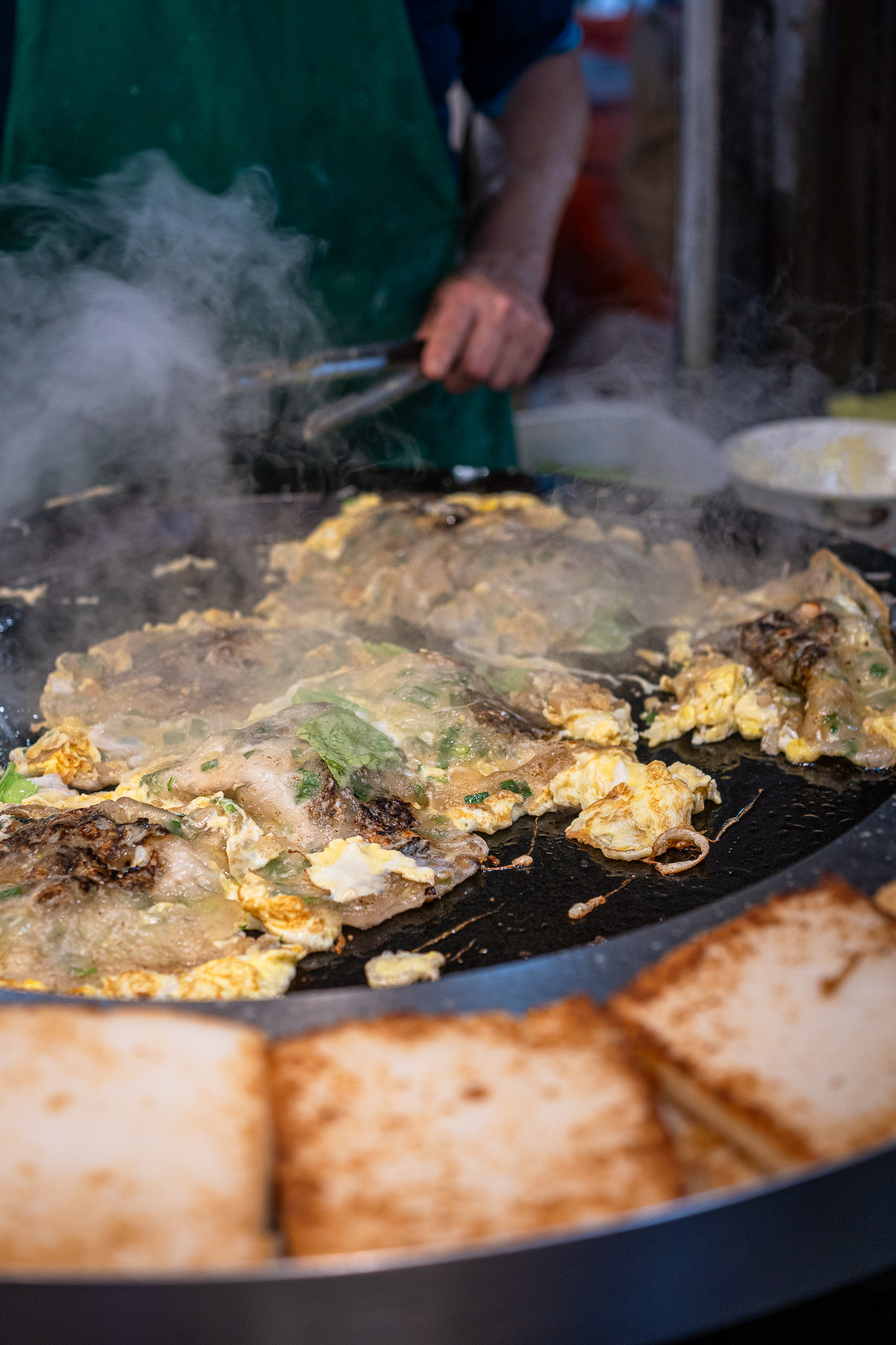
Oyster Omelet @ Ximending Walking Street
Taipei is known for its famed night markets and stinky tofu! Most night markets close around 23H or midnight.
Night markets that we highly recommend include:
- Shilin – Shilin Night Market is one of the largest night markets in Taipei and is very popular with tourists. The market is centered on Yangming Theater and Cixian Temple. The night market is formed by shops on Wenlin Road, Dadong Road, Danan Road, etc., and was built as early as 1899. Many visitors have come to Shilin Night Market to enjoy the delicious food, such as large pancakes enfolding small pancakes, hot pot on stone, or Shilin sausage. Students are the main customer group, so many goods are sold at less expensive prices as compared to regular stores. There are special stores for furniture, clothing, photos, and pets. The finery shops and cold dessert shops in “lover’s lane” attract most student customers. The night market is packed with many people during the holidays. This night market is located further north but is accessible by bus or a 22-minute Uber ride.
- Raohe – Raohe Street Night Market is 600 meters in length and packed with mostly food vendors. The government set up the Raohe night market in 1987. Various products and local foods are sold in the night market. There is a decorated archway in front of the entrance and exit of the market. Here we loved the popcorn pork, popcorn chicken, stinky tofu, oyster vermicelli from Dong Fa Hao, Fuzhou Ancestor pork pepper buns, sweet potato balls, and chicken wings stuffed with sticky rice. It’s located super close to Songshan MRT Station. This is another very popular night market for tourists.
- Tonghua (Linjiang) Night Market – This is known as the “locals” night market. It’s centrally located and offers unique dishes that are often favored by locals.
- Ximending Night Market – The district acquired the name “Ximen” during the Japanese Rule, so you’ll see a lot of Japanese influence here. The Ximending Walking Street looks very similar to Shinjuku or Shibuya with tons of neon lights and shops. In 1896, the first theater, “Tokyo Pavilion,” was inaugurated. Ximending is filled with late-night street food vendors. It’s also where you’d go to try the famous oyster omelet. There are plenty of vendors to choose from, but our favorite is from this spot.
- Huaxi – This night market has two sections, one with services and products and another section with food. The food selection, however, is not as impressive as other markets. We went here and enjoyed inexpensive massage services. The area was also once known for porno stores, which were later outlawed and made the area increasingly safer.
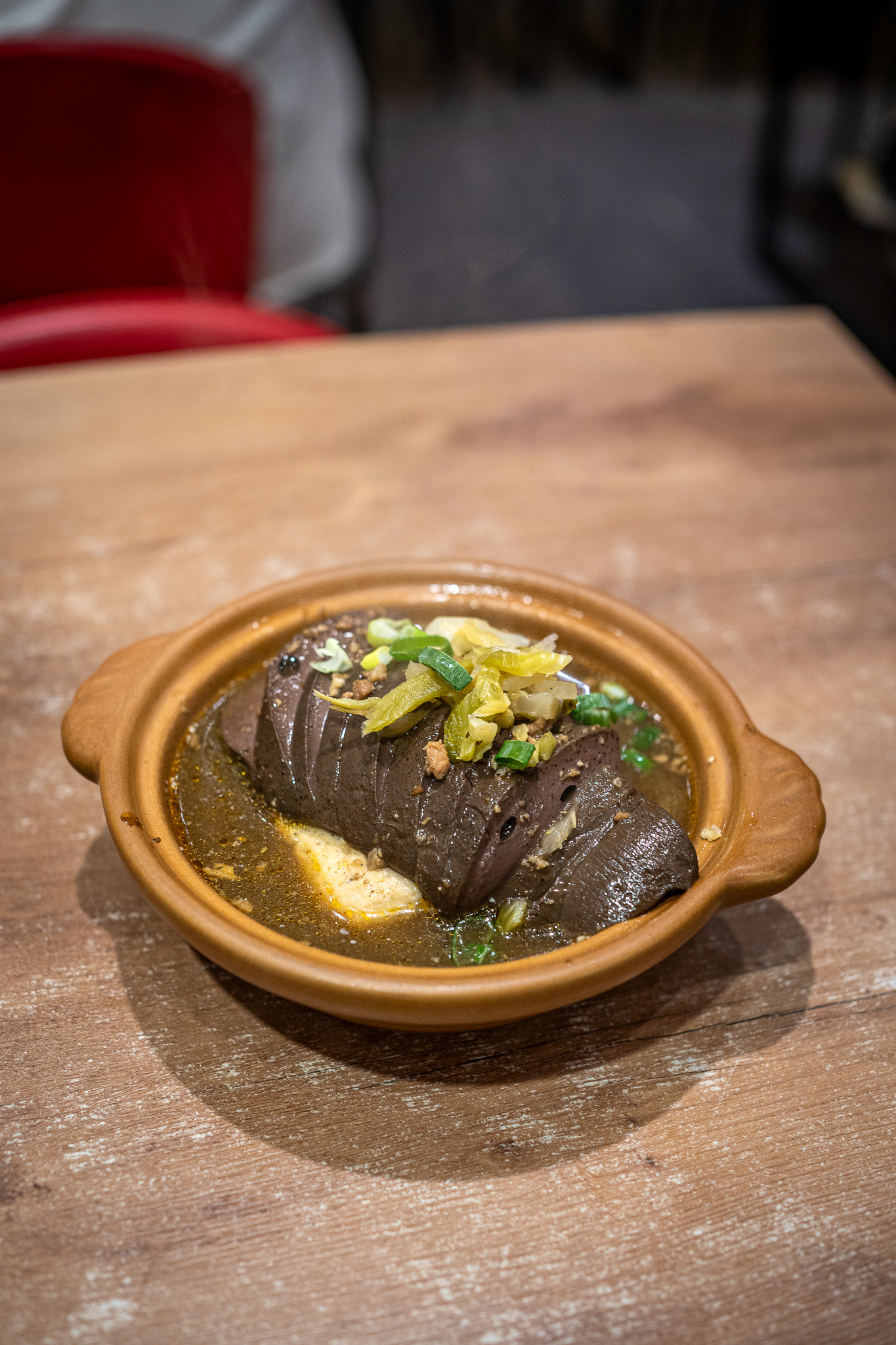
Stinky Tofu with Blood Tofu on top @ Shilin Night Market
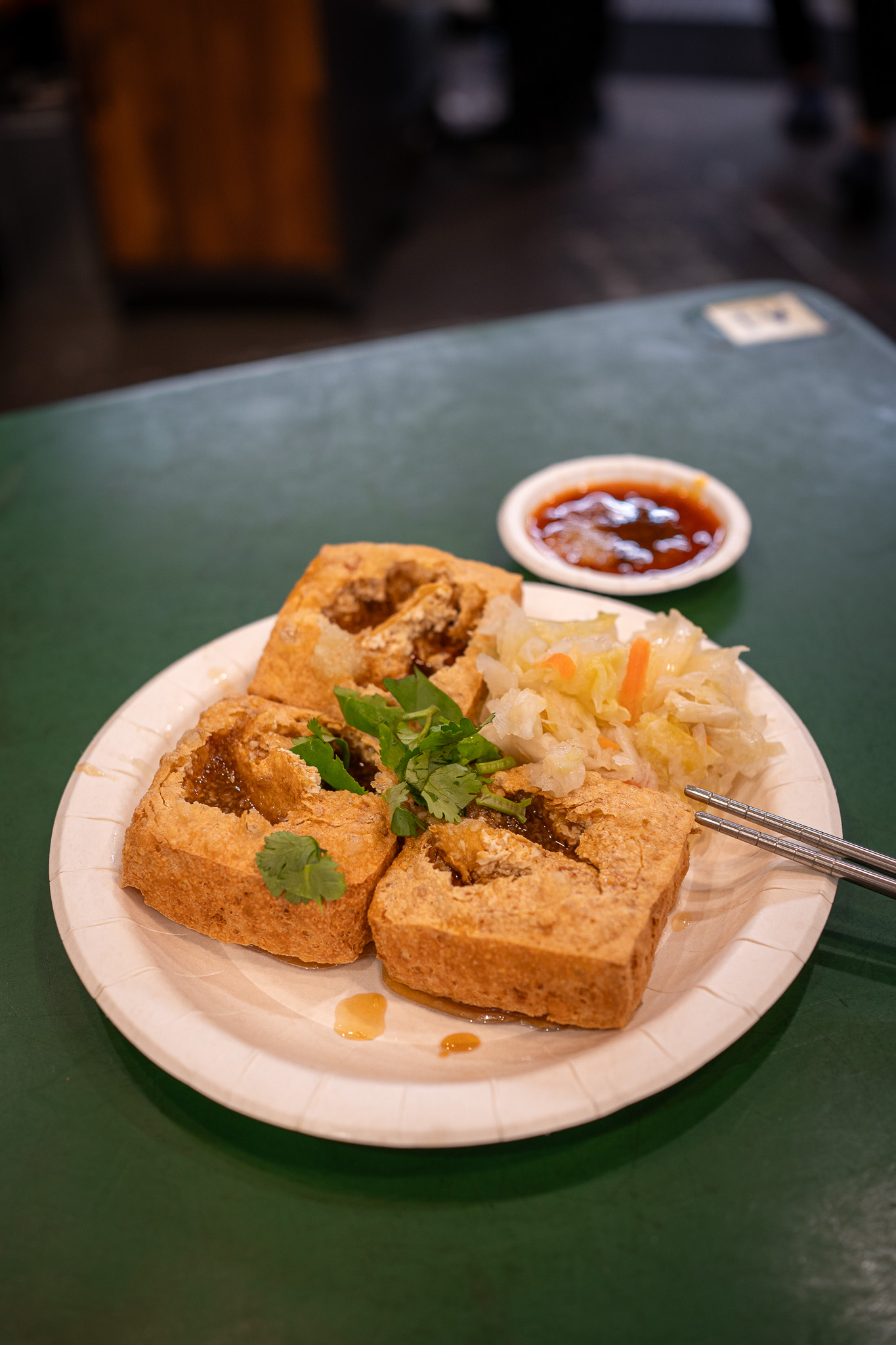
Chou Dou Fu (deep fried stinky tofu) from Tonghua/Linjiang Night Market
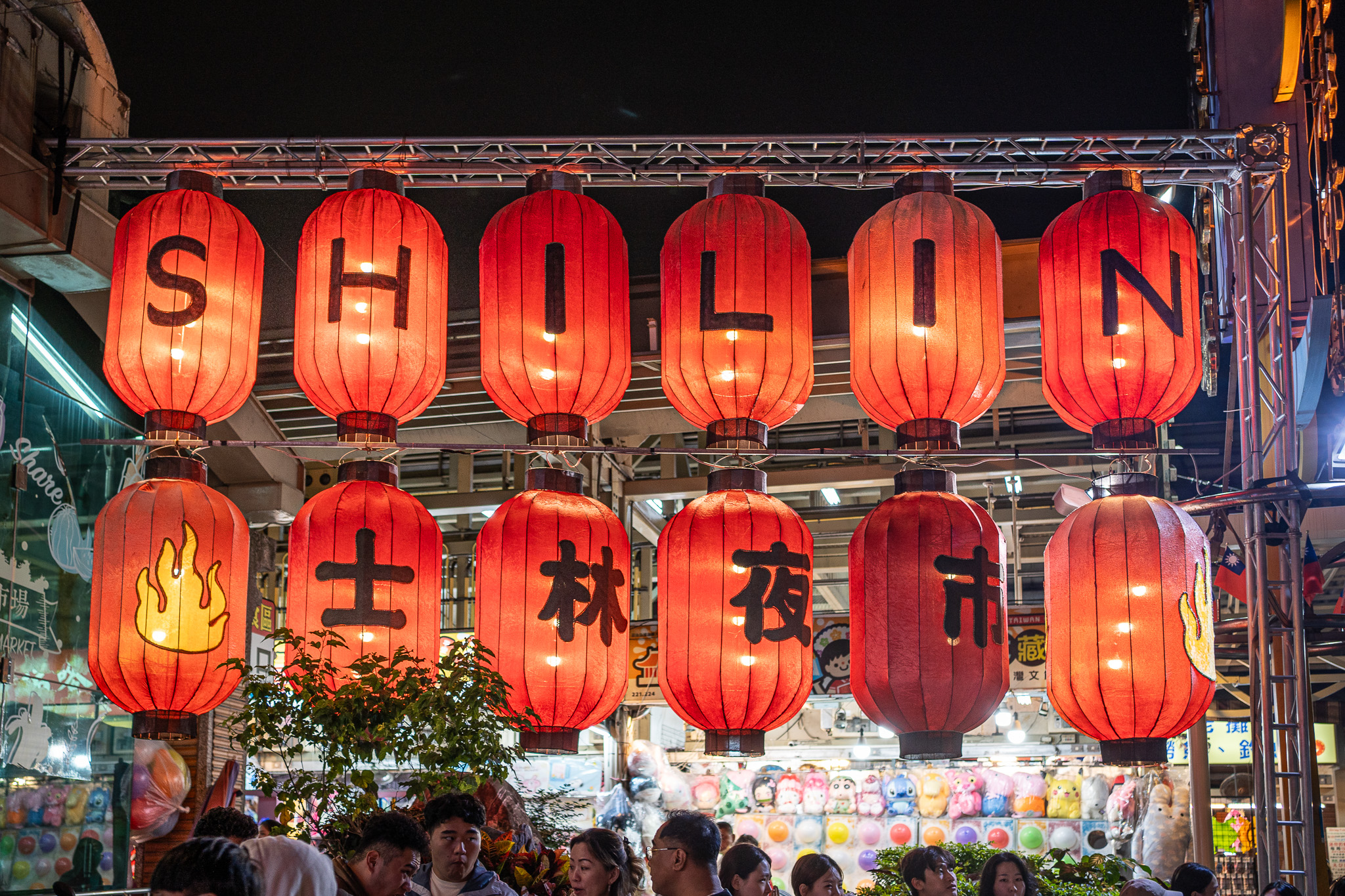
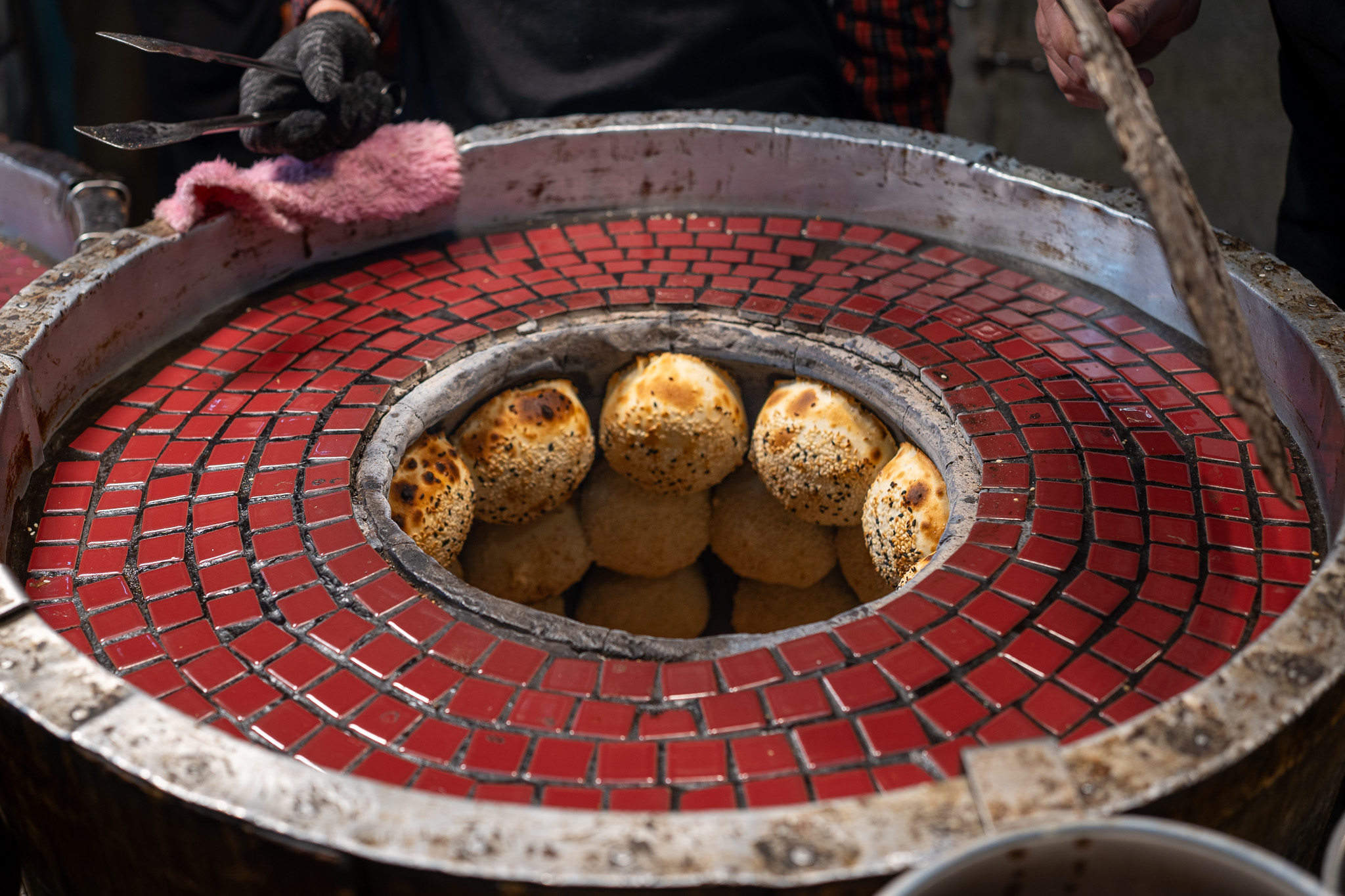
Pork Pepper Buns
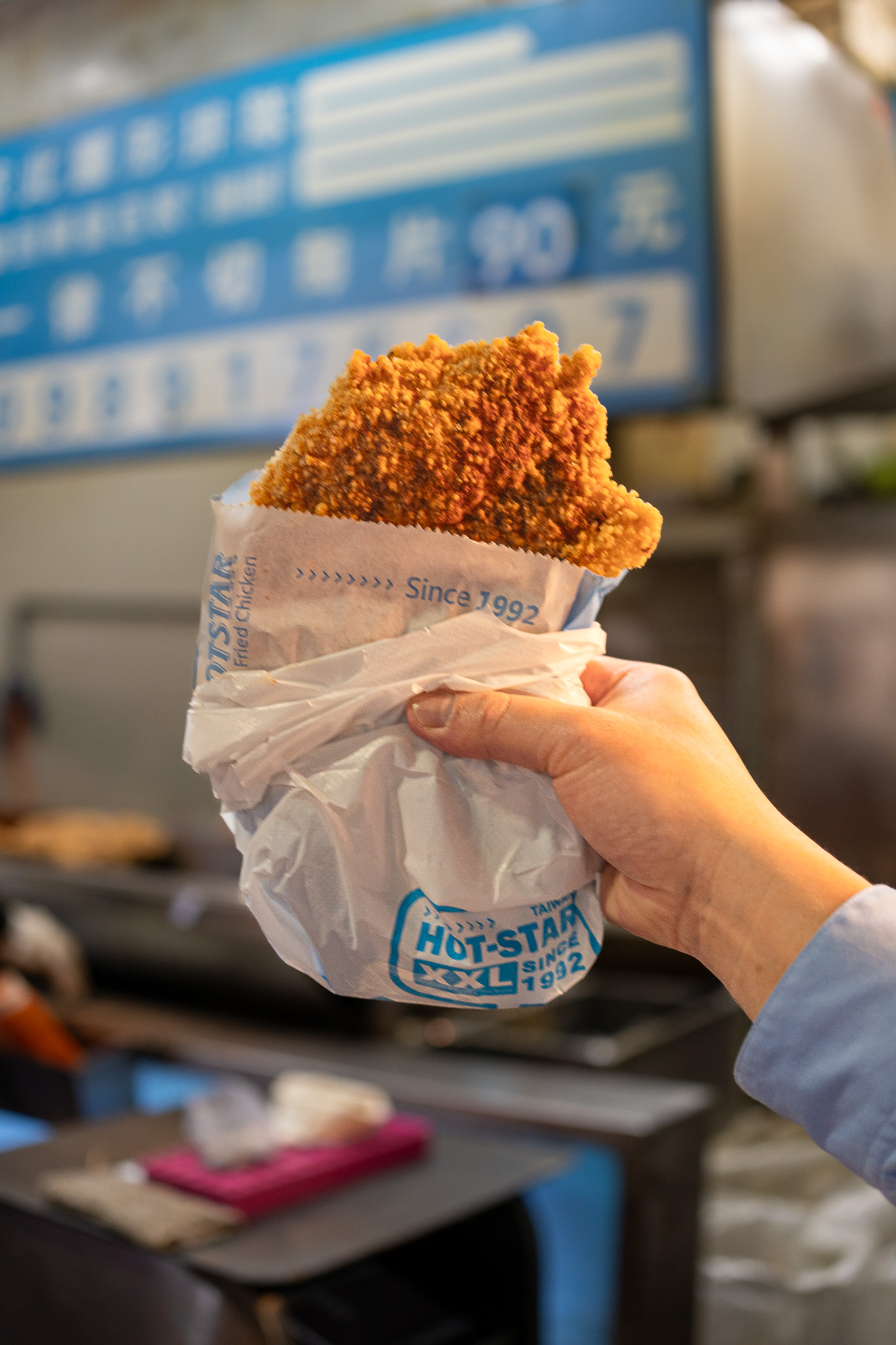
What all Taiwanese fried chicken should strive to be.
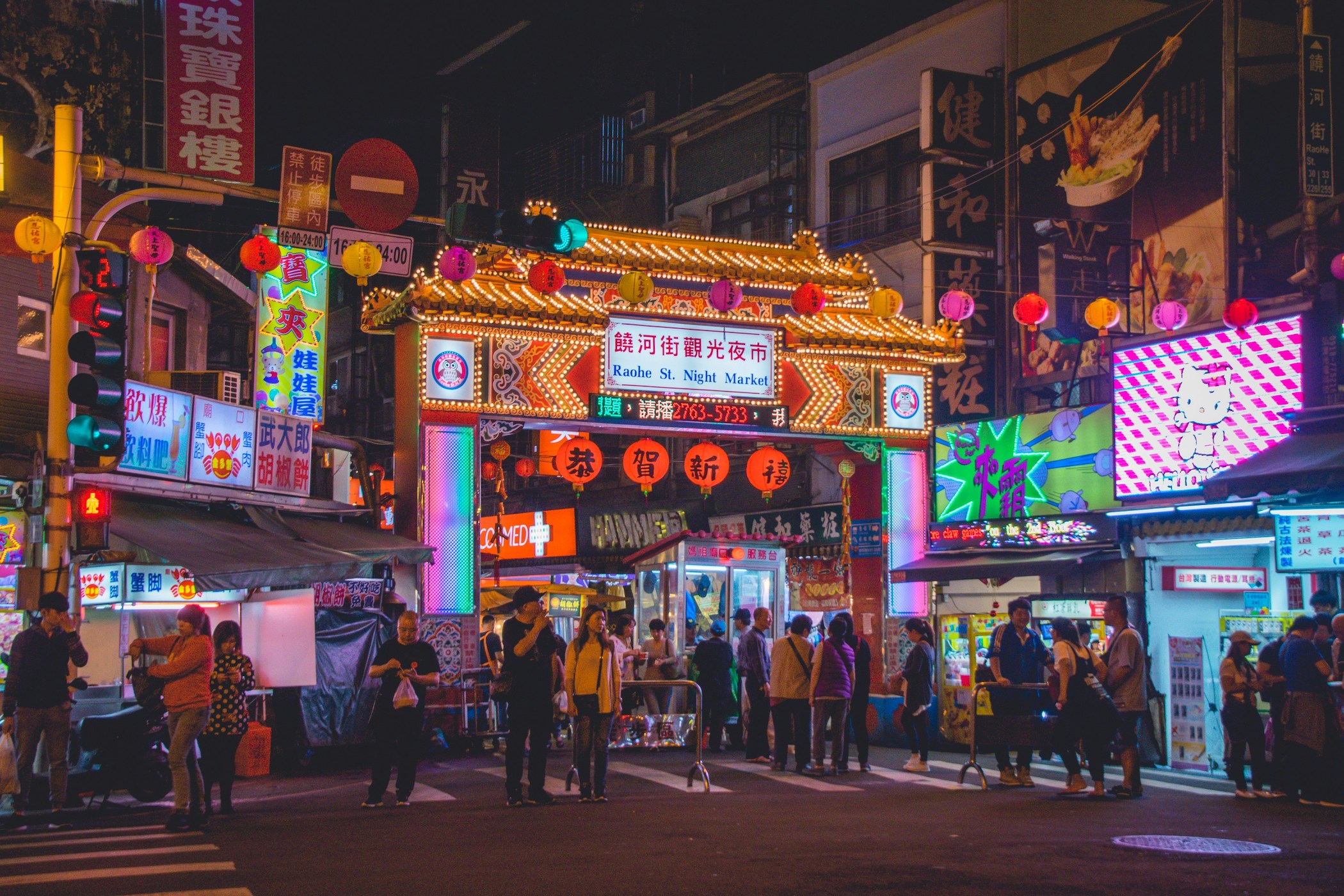
Raohe Street Night Market
#4 228 Peace Park
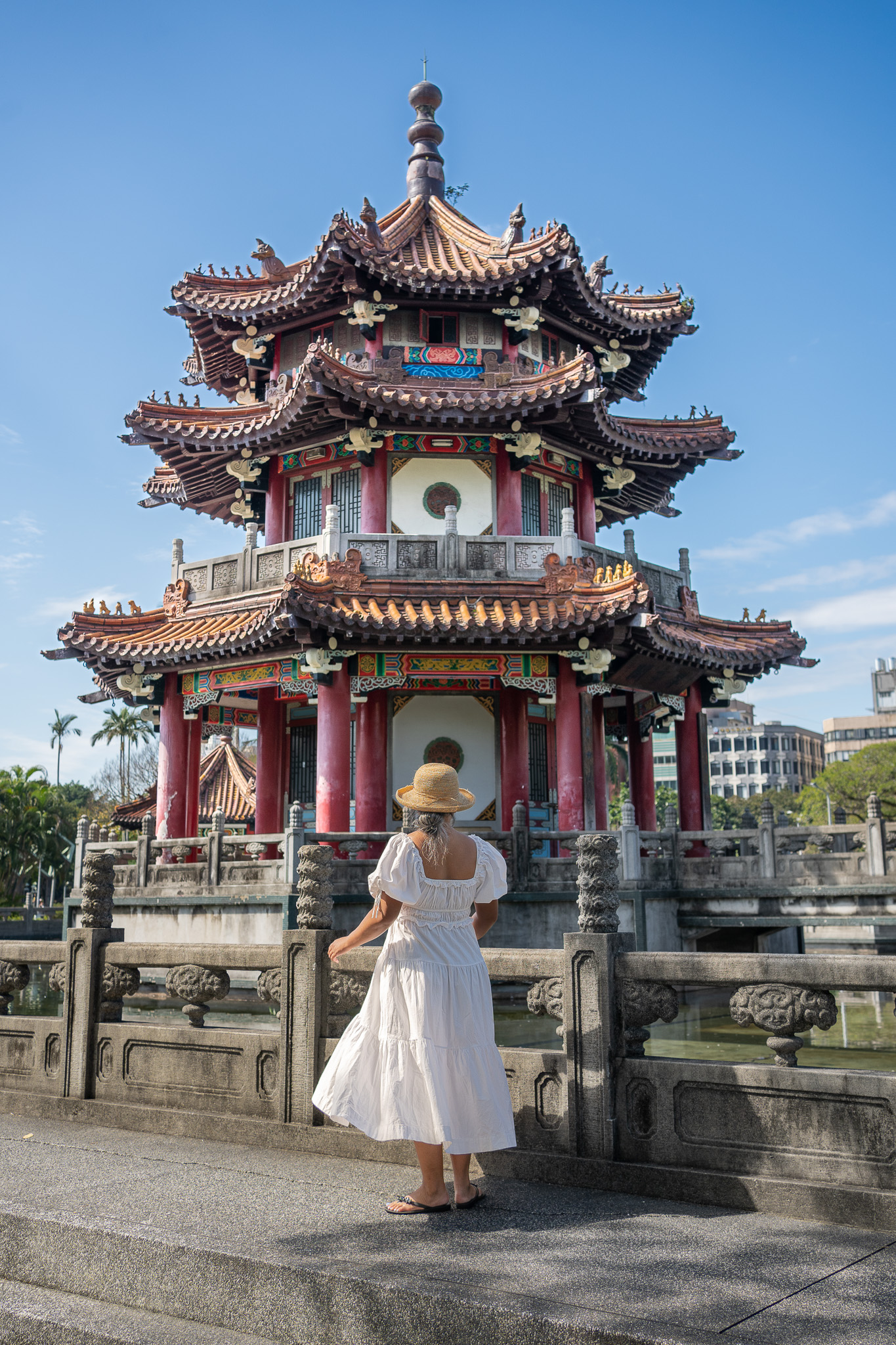
Another serene destination where you can spend hours here. We love the gorgeous pagoda here. It’s the perfect opportunity for photos.
The park however has a significant history of protests that eventually led to Taiwan’s independence and democracy.
#5 Explore Taipei’s Notable Old Streets
Old Town streets are scattered throughout the city and make for perfect exploration and photo opportunities. Technically, there are “old streets” in every town in Taiwan, but what makes them famous enough to become an old street is their historical background and preserved buildings.
Most Old Streets are also pedestrian streets with popular night markets in the night and shopping hubs during the day.
Here are some old streets that we highly recommend exploring:
- Dihua Old Street
- Dadaochang Wharf and Park
- Daxi Old Street
- Jiufen Old Street
- Jiguang Old Street
- Sanxia Old Street
- Bangka Old Street
- Jinbaoli Old Street
- Bopiliao Historical Block – Bopiliao Old Street is located along Lane 173, Kangding Road south of Laosong Elementary School in Taipei’s Wanhua District. Laosong Elementary School was built in 1896, earning the school’s northern building designation as a municipal heritage site.
- Tamsui Old Street
- Shifen Old Street
- Shiding Old Street
- Shengkeng Old Street
#6 Ximending Walking District
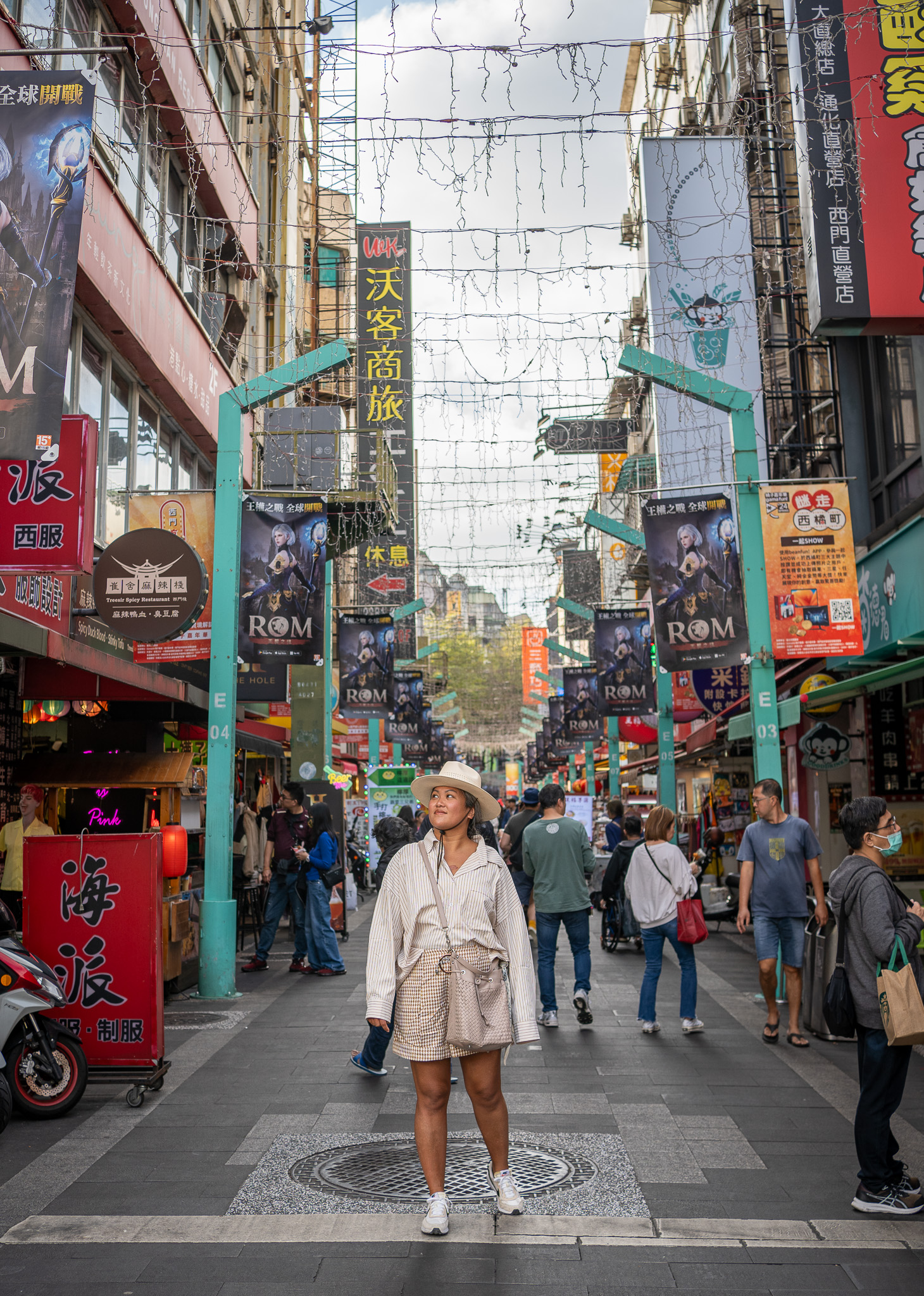
Ximending Walking District looks and feels like Shinjuku or Shibuya Japan. There are neon signs and lights plastered throughout the town. Here we sampled many street food dishes and explored the bustling craft cocktail and bar scene of Taipei.
Nearby you can explore the Red House, which was built in the style of American architecture. Behind the building is an open-air courtyard with gay-friendly bars and eateries.
#7 National Dr. Sun Yat-Sen Memorial Hall
National Dr. Sun Yat-sen Memorial Hall was built in 1972. It is located in east side of Taipei and is close to Taipei City Hall.
The memorial hall was built to commemorate the great founding father of the R.O.C., Dr. Sun Yat-sen, and was built on his 100th birthday. Chinese-inspired palace is grand and beautiful. There is a statue of the founding father in the building for the public to pay their respect. There are exhibitions of historical items related to creation of R.O.C. The memorial hall has a concert hall that can accommodate more than 3,000 people.
It is equipped with excellent facilities and hardware items and has become an important place for performance. The lecture room in Sun Yat-sen Memorial Hall frequently hosts lectures and academic events. The main building is surrounded by a long, winding porch, and the four exhibition rooms frequently host works of famous artists.
The willow trees along the lake in Zhongshan Park, the garden with lush flowers, and the beauty of the Chinese garden are worth perusing.
#8 Visit the Red House
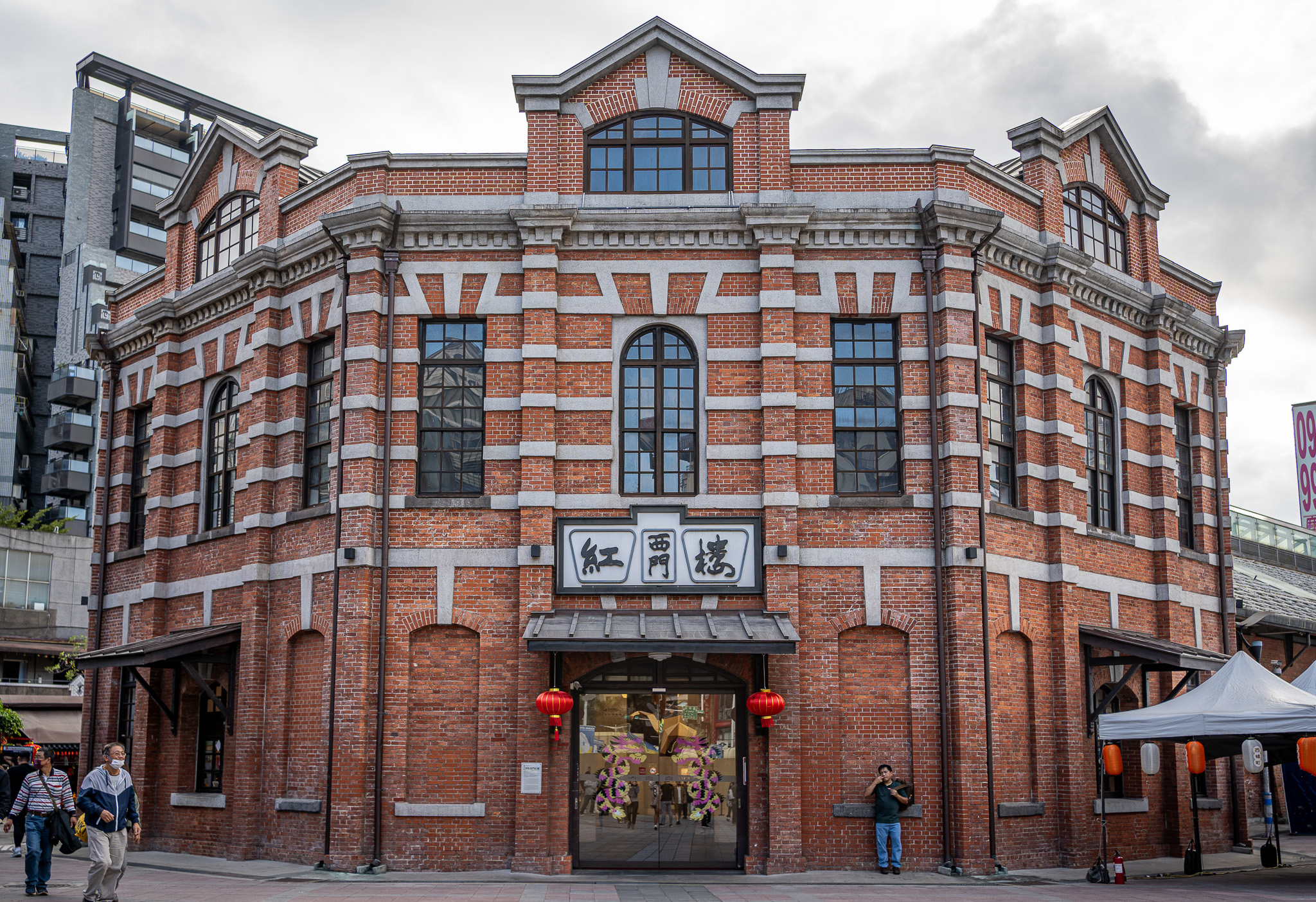
The Red House is a Western-style red-brick octagonal structure in Taipei’s Ximen district. The space was built in 1908 and is Taiwan’s first public market and the most well-preserved historic site.
Designed by Kondo Juro, a western-styled architect in the prefectural civil engineering office at the time, the market entrance, incorporating both octagonal shapes.
In November 2007, the Department of Cultural Affairs commissioned the Taipei Culture Foundation to manage The Red House. It underwent a series of cultural transformations including: at Octagon Building 2F Theater, Central Display Area, The Red House Tea Shop, The Red House Select Shop, at Cruciform Building 16 Workshops, Cultural Arts Exhibition Platform, Riverside Live House, Market for Artists & Designers located by North Square and Outdoor Café located by South Square. These changes provided better services to the general public, created a space of creativity, and attracted visitors.
#9 Visit the National Palace Museum
The National Palace Museum houses the world’s largest collection of priceless Chinese art treasures, one which spans China’s nearly 5,000-year history. Most of the museum’s over 600,000 art objects were part of the Chinese imperial collection, which began over 1,000 years ago in the early Song dynasty.
#10 Bangka Lungshan Temple
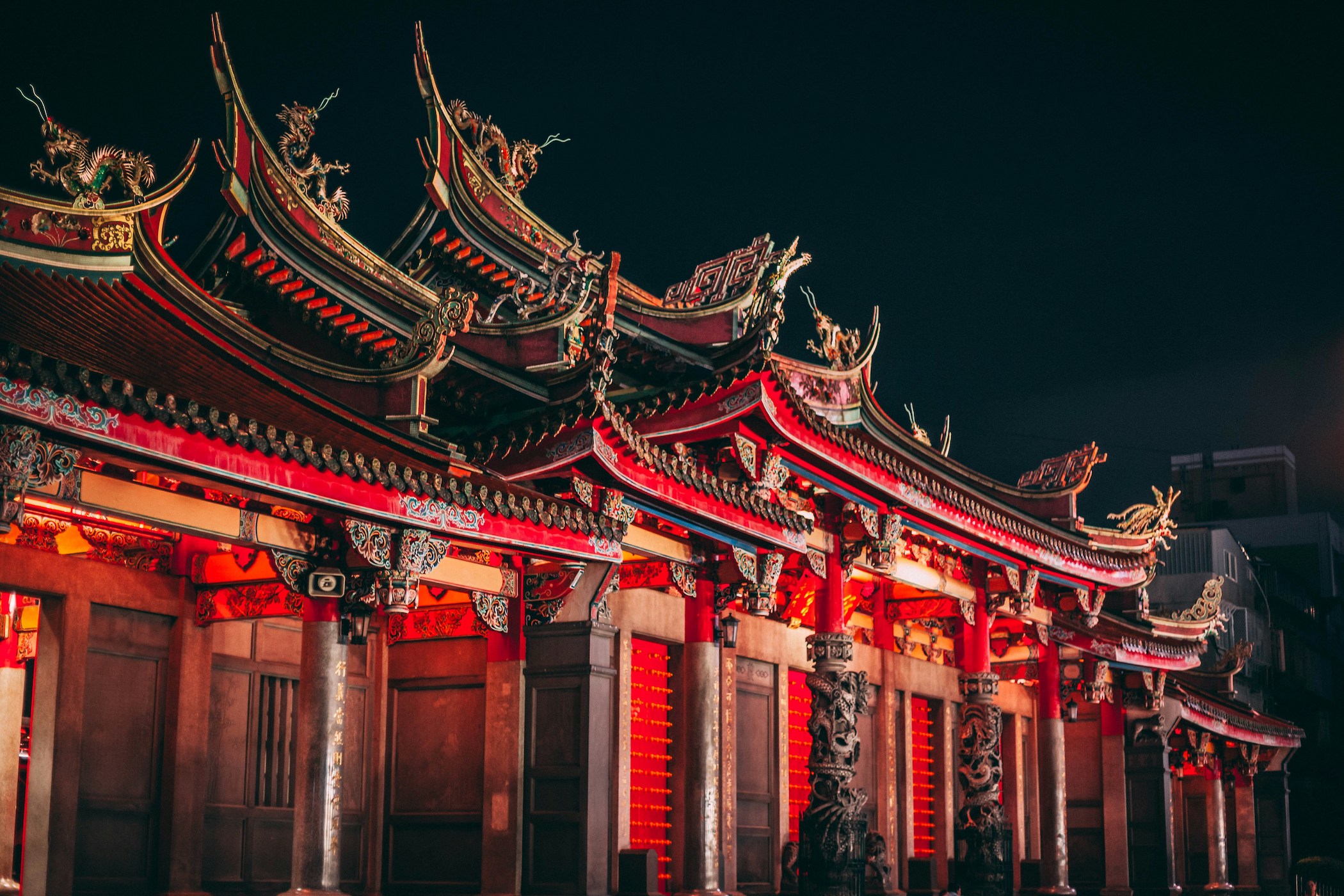
Bangka Lungshan Temple is a Chinese folk religious temple in Wanhua District.
The temple was built in Taipei in 1738 by settlers from Fujian during Qing rule in honor of the Goddess Guanyin. It served as a place of worship and a gathering place for the early Chinese settlers.
The temple has gone multiple renovations and rebuilds because of war and deterioration.
#11 Maokong Gondola
Located in the southern tip of Taipei City, Maokong has evolved into a favorite tourist destination for locals and visitors, who go there to visit its tea plantations and tea houses.
The construction of the Maokong Gondola began on November 10, 2005, and the system began operation in July 2007. It is Taipei City’s first high-altitude gondola. This French POMA-made system makes a circuit of four stations: Taipei Zoo Station, Taipei Zoo South Station, Zhinan Temple Station, and Maokong Station. There are also two angle stations where the gondola changes direction.
#12 National Taiwan Museum
The National Taiwan Museum was established in celebration of the completion of the Main Line Railway in Taiwan. The current building, located in the 228 Peace Park, was completed in 1915 and designed by Japanese architect Nomura Ichiro in a Renaissance style.
For a century, the Museum has been standing in front of the Taipei Railway Station, on the north-south and east-west pivotal crossroads of old Taipei. Its elegant architecture, abundant and diverse collections, and unique geographical location have made the Museum an important landmark in Taipei City. Containing more than 100 years of objects on anthropology, geology, zoology, and botany, it is the oldest natural history museum in the country.
#13 Huashin 1914 Creative Park
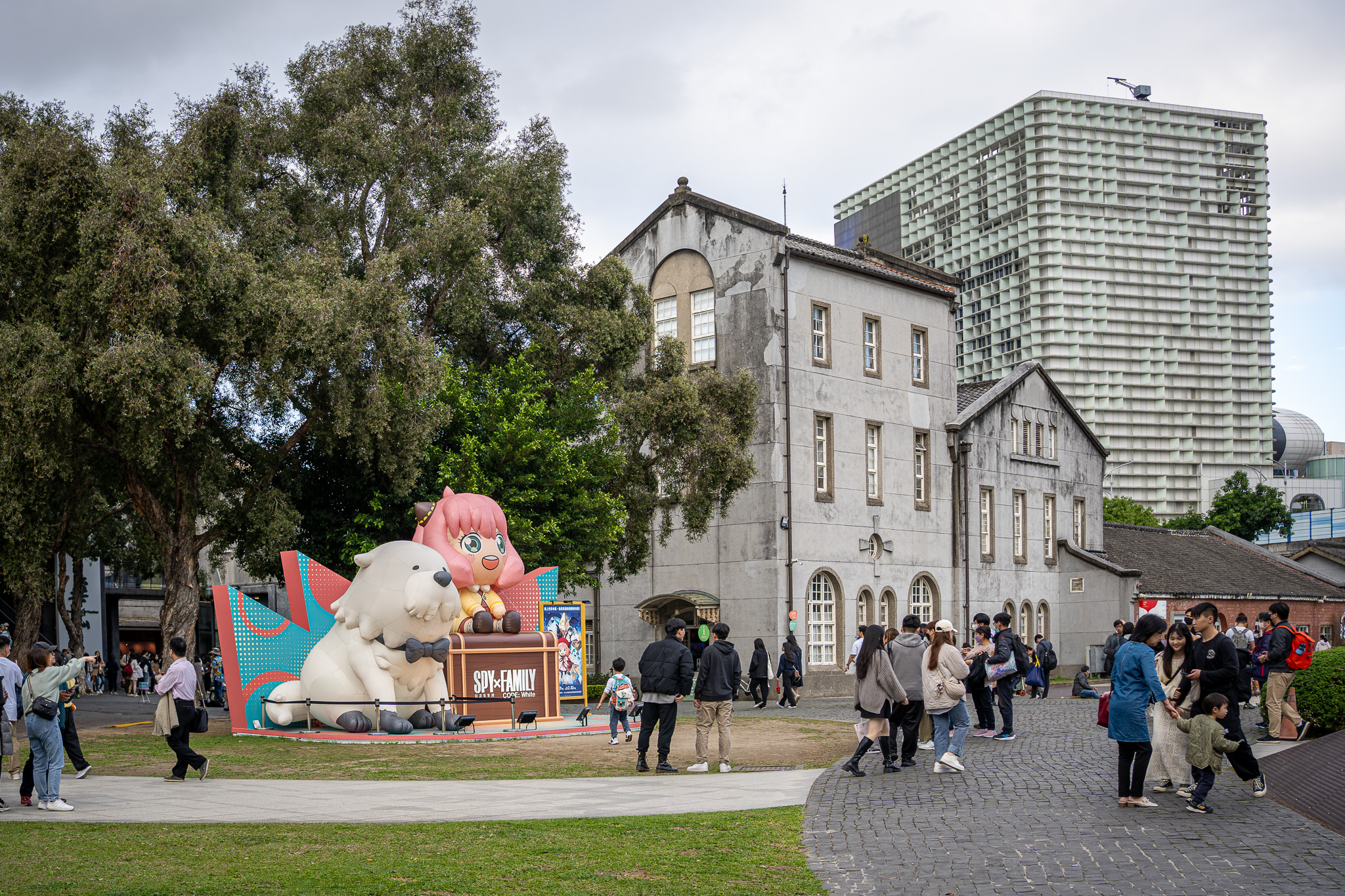 Huashan 1914 Creative Park is located on the grounds of the former Taihoku Winery.
Huashan 1914 Creative Park is located on the grounds of the former Taihoku Winery.
The buildings here were constructed by the Japanese in 1914 as a sake plant and were later re-purposed as the Taihoku Winery. After the winery relocated in 1987, the plant remained as a museum of industrial building technology.
Since 1999, this site has transformed into a venue for art and cultural exhibits and performances. The park is home to several restaurants, art galleries, cultural and creative stores, and performance venues.
I’d describe it as the Universal Studios of Taipei.
#14 See the Sunset from Elephant Mountain (Xiangshan)
To get to Elephant Mountain, you’ll need to take a hike. It takes about 30 minutes to get to the top but from here you’ll get the best skyline views of Taipei as well as some exercise.
#15 Go Fashion Shopping at the Wufenpu Shopping District
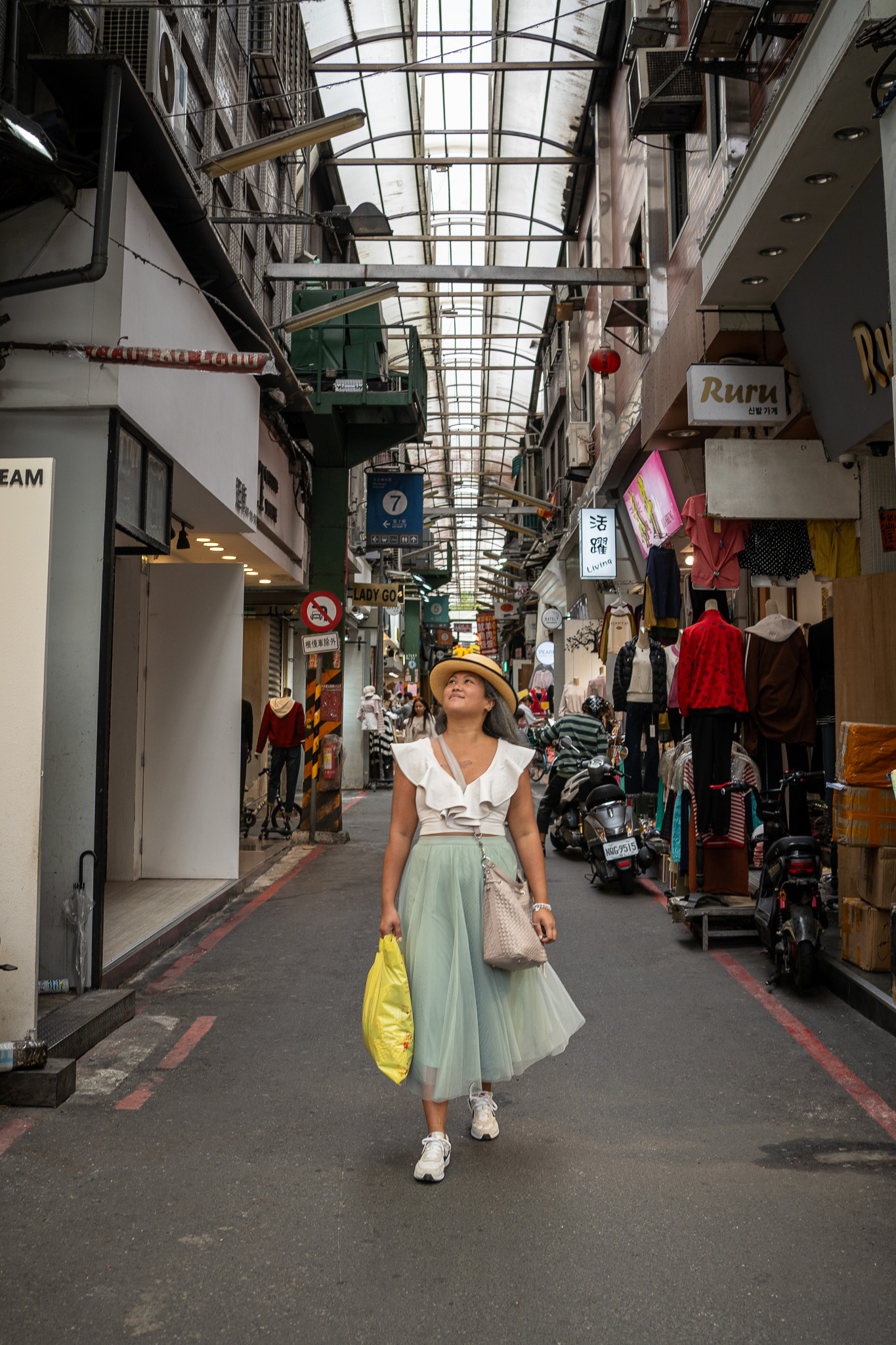
Fashion is everywhere in Taiwan. You can indulge in designer labels at their massive shopping malls or find steep discounts in the Wufenpu Shopping District. Taiwanese vendors are typically pretty set on their prices, but it doesn’t hurt to haggle, especially if you’re buying in bulk.
We love shopping their sample sale section where you can quality pieces for 100 to 150 yuan, which is $3 to $5 bucks an article of clothing.
Most vendors will only take cash, so make sure you have plenty on hand when visiting Taipei’s garment district.
Fashion brands tend to run small in Asia. Don’t feel bad if you need to size up. I am typically a size 6 to 8 US and wear an XXL or XXXL in Asian fashion.
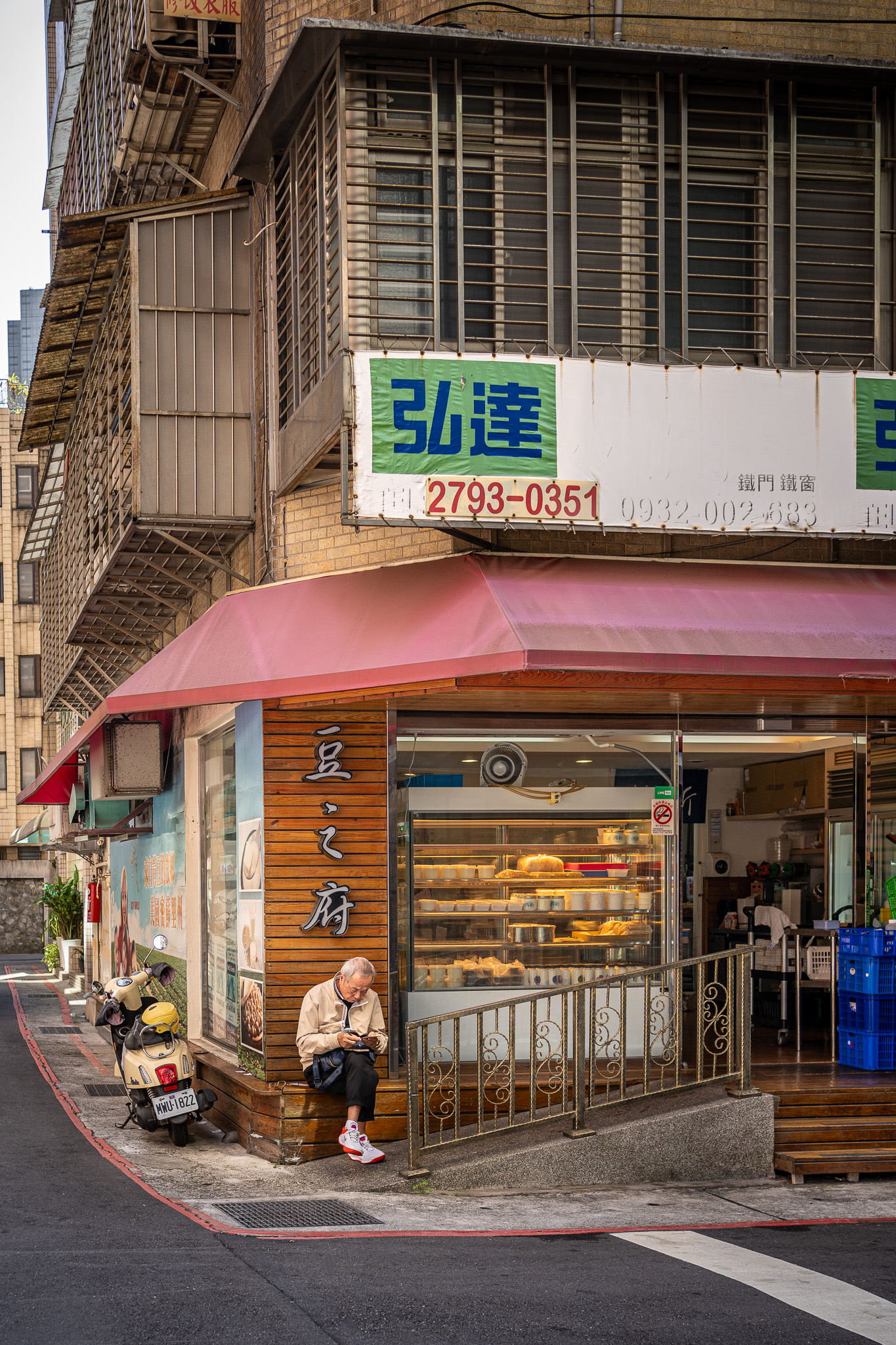
Local Tofu Shop in Taipei
Where to Eat in Taipei
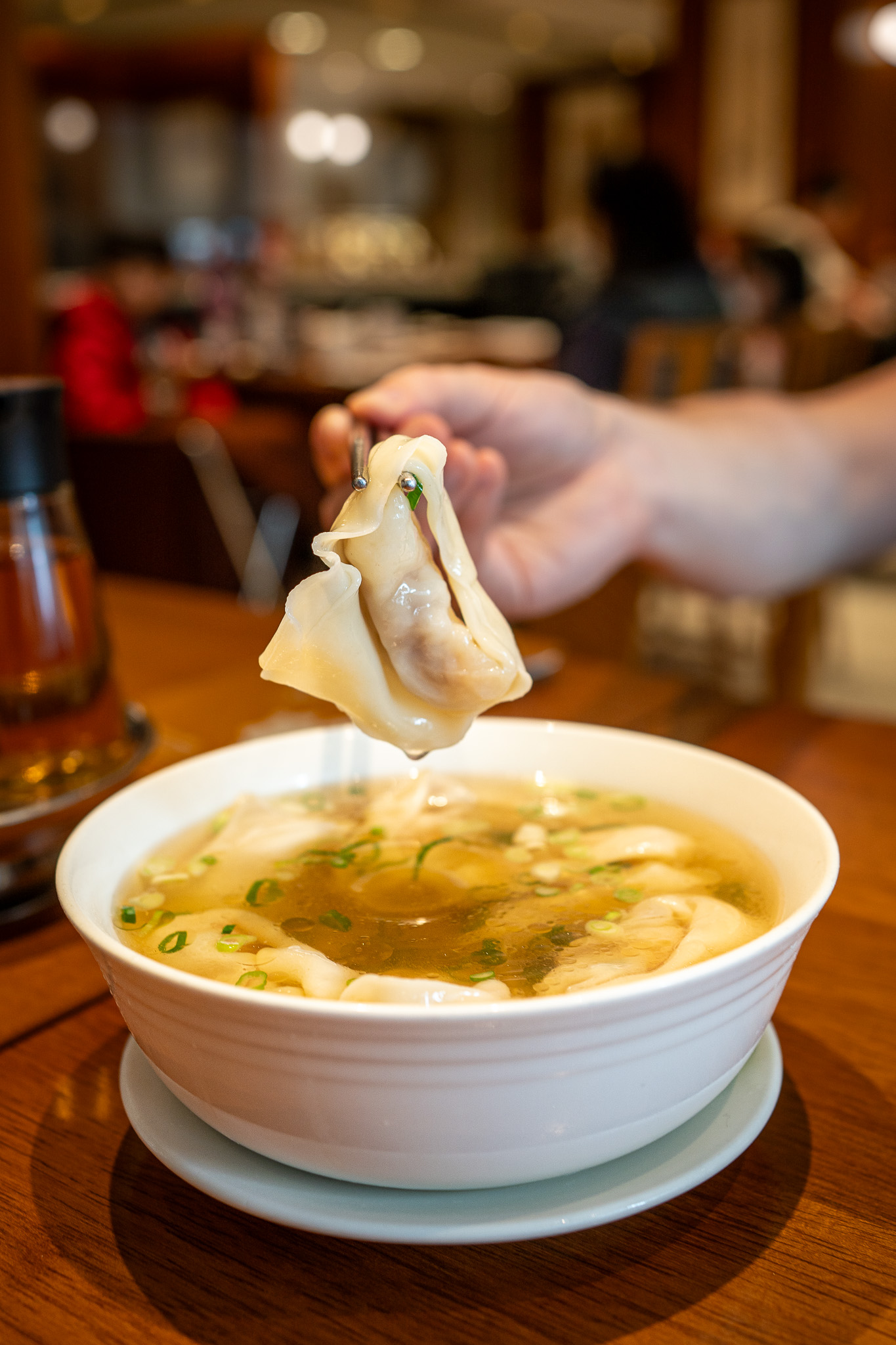
Wonton Soup from the original Din Tai Fung restaurant
Here is our list of restaurants that aren’t in night markets.
- Din Tai Fung: We are huge fans of Din Tai Fung stateside, but the DTF in Taipei missed the mark for us. They use rice vinegar instead of black vinegar in their famed dumpling sauce. Chili oil is also not readily available. You’ll have to request it and even then, they deliver a tiny amount. There were also different dishes offered on the menu. The original location is a delivery and takeout spot only, so you’ll have to walk a block east to dine in at their actual sit-down restaurant. The wait is typically 30-50 minutes depending on the time and day. Most locals will tell you it’s overpriced and good, but not something most locals seek out.
- Chubby Burger – We did a little burger tour and this spot in Xinyi makes amazing burgers! Their burgers are smash patty style and are packed with flavor. As an American, this burger was excellent. We also tried Awesome Burger just down the street but their burgers were not as flavorful. Highly recommend going to Chubby instead!
- Fuhong Beef Noodles – An amazing spot for authentic beef noodles. It’s pretty popular with tourists and is open 24 hours.
- Jin Feng Braised Pork Rice (金峰魯肉飯) – This is the most famous spot for lu rou fan (滷肉飯) or braised pork rice, a comforting rice and meat dish that is often served with a boiled egg. Many hotels that include breakfast may also have braised beef rice as part of their buffet. We enjoyed braised pork rice during our stay at the Amba Hotels in Songhan.
- Liu Shandong Beef Noodles – A more local noodle spot with handmade noodles and a tasty beef broth.
- Tanuki Sushi & Izakaya (狸君居酒屋-串燒|中山站美食|宵夜) – Taipei has TONS of Japanese restaurants. You’ll feel as if you’re in Tokyo instead of Taipei. We stumbled upon this sushi and izakaya restaurant that was open until 6 AM! And it was honestly so good! It’s a bit on the pricier side but worth it. We ordered sashimi, sushi, mala hot pot, and a tasty fish soup.
- Yong He Soy Milk – This little breakfast spot serves amazing fan tuan (sticky rice rolls with Chinese donuts, pork floss, and pickles – the flavor combo is *chef’s kiss*), Xiao Long Bao (probably some of the best I’ve had in Taipei), and soy milk (hot or cold). They’re also open late at night the the spot is busy with locals. We got enough food for 4 people and it cost us under $15 USD.
- Yongkang Beef Noodles – Another beef noodle spot and locals favorite. We’d come back for the braised beef. It’s so good here!
- 賓 果 烤肉飯牛肉麵水果汁 – Next to Yong He Soy Milk is a braised beef noodle spot owned by a Vietnamese lady. The broth, meat, and noodles are amazing and cost only 140 TWD ($4.50 USD).
- 江家牛肉麵永和豆漿(光復店) – Another locals-only spot! They have rice rolls (fan tuan) and chilled soy milk (leng doujiang). They also offer dumplings in soup which has been one of my favorite ways to eat dumplings in Taiwan! I ordered this delicious dumplings in hot and sour soup dish (pictured below).
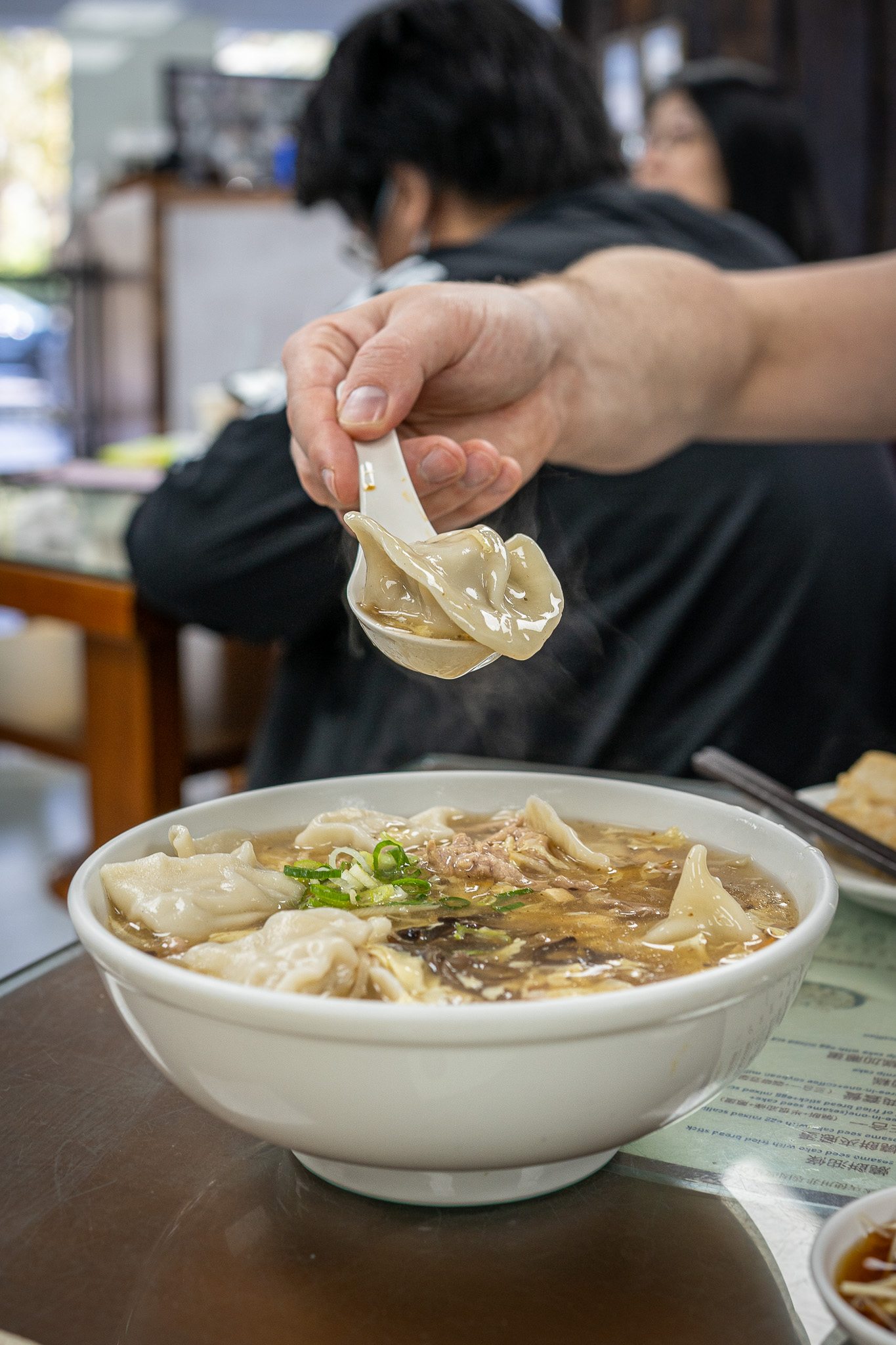
Dumplings in hot and sour soup
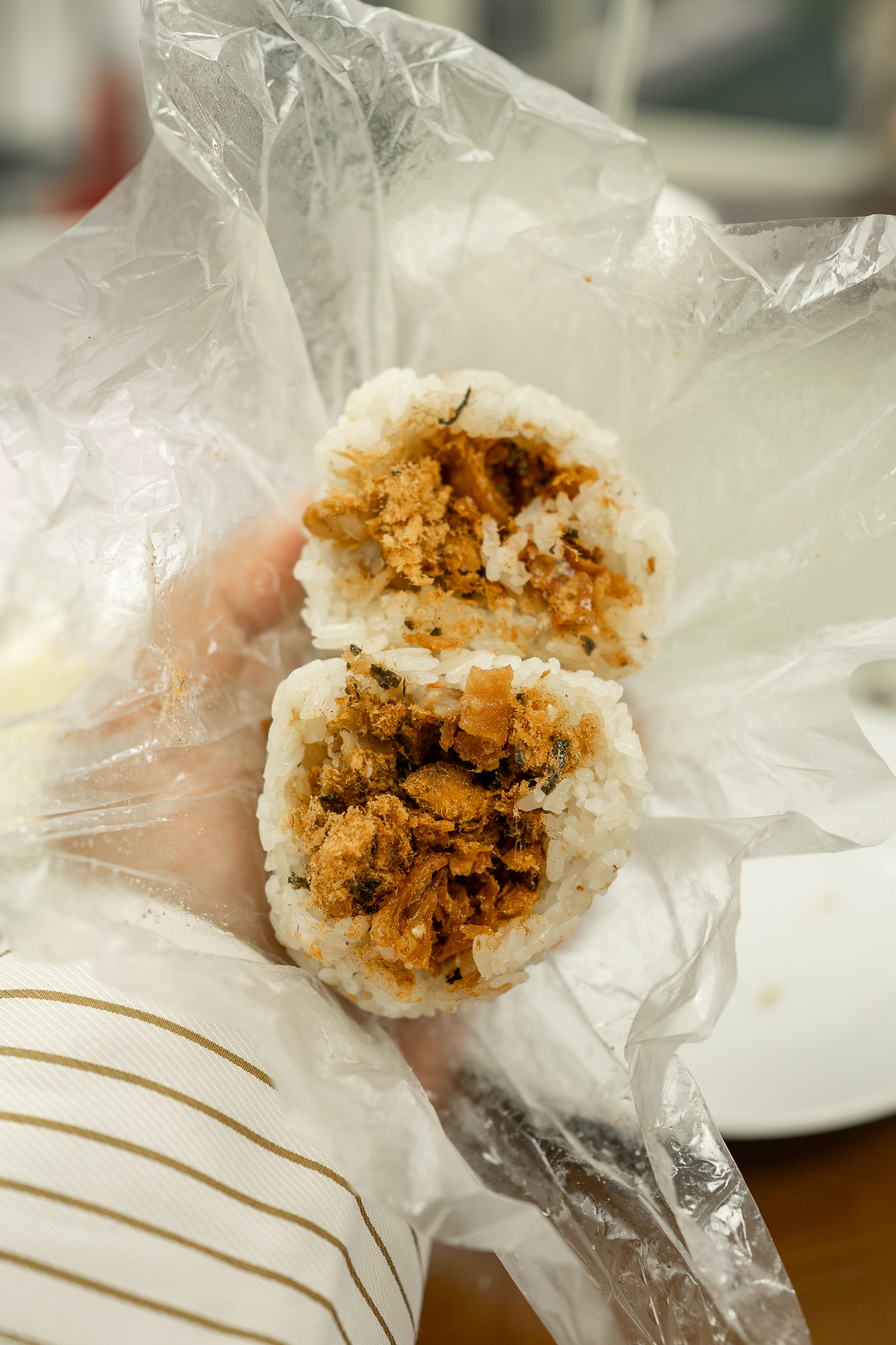
Fan Tuan (filled sticky rice roll)
Related: Best Dishes to Order at Din Tai Fung
Where to Drink in Taipei
Gan bei! The drinking scene is very big in Taipei. Some bars and eateries are open until 6 AM or even later. And many spots require a minimum spend of 300 to 900 TWD. It’s best to do your research beforehand so that you don’t end up spending too much.
Here are our favorite drinking spots in Taipei:
- AHA Saloon – 80’s themed craft cocktail bar and listed as one of the top 50 best bars in Asia.
- Bitter Burro – Amazing and unique craft cocktails! Reservations are encouraged on weekends.
- Draft Land – Affordable draft cocktails and beers. We were stoked to find this place near our hotel (W Taipei). They have multiple locations. Do check them out!
- Sidebar – A craft cocktail bar that has a hidden craft cocktail bar inside! Their liquor selection is excellent and mixologists are very creative and experienced.
- Starry Night Bar – We love this bar! Nono the bartender makes amazing creations and infuses his own spirits.
- Taptail – Another spot near Ximending with amazing draft cocktails. Phillip, the bartender, creates refreshing cocktails and is an AMAZING cook. You have to try the crispy cauliflower and BBQ wings. They’re so good and are the perfect bar snack!
- Tei by Obond – Love their tea cocktails. It’s definitely a good date night spot for upscale drinking.
- To Infinity and Beyond – A craft cocktail bar in a spaceship!
Check out our mini Taipei review on Instagram!
View this post on Instagram
Taipei Travel Guide MAP
Use our travel guide map to plan your next trip to this fabulous destination.
Thank you for visiting today! If you found this encouraging or informative, please connect with us on Instagram or TikTok.
Sign up for our monthly newsletter for updates and more. We promise we won't spam you! Feel free to unsubscribe anytime.
If you're a brand and want to work with us, please visit this page to get in touch.

